LEER CON LAS MANOS
2021
Un recorrido por la obra fotográfica Leer con las manos, una serie que explora la relación entre mirada y lectura. Realizado para la Fiesta de la lectura, MALBA, estrenado el 15 de mayo de 2021.
Un recorrido por la obra fotográfica Leer con las manos, una serie que explora la relación entre mirada y lectura. Realizado para la Fiesta de la lectura, MALBA, estrenado el 15 de mayo de 2021.
Aída Carballo (1916-1985) fue una artista argentina fundamental. Este video toma como punto de partida una serie de documentos personales de la artista que muestran su actividad en el medio local e internacional, su trabajo docente, algunos apuntes de estudio, trámites burocráticos. En estos últimos se ve la evolución de su firma, desde la niñez a la adultez y madurez creativa, cuando su nombre empezó a formar parte de su obra. En esta obra el calco de sus manuscritos se vuelve una forma de proximidad y un intento por repetir un gesto ajeno que nunca se logra.
Duración: 10:40 minutos
Documentación fotográfica: Luci Laumann.
Cámara, acción y edición: Leticia Obeid.
Corrección de color: Sol Miraglia.
Post-producción de sonido: Luis El Halli Obeid
Realizado para la exhibición: Transformación. La gráfica en desborde. Museo del Grabado, Casa Nacional del bicentenario, febrero-julio de 2021. Curadoras: Silvia Dolinko y Cristina Blanco
Museo del grabado
Instalación sonora, 19:43 minutos, noviembre 2020
Comisariada para la muestra La colección escucha, Palais de Glace, Buenos Aires.
Esta obra trabaja sobre el acervo de un premio tradicional en Argentina, el Salón Nacional, que existe desde 1911. El audio fue instalado en el depósito de obras escultóricas que han quedado en posesión del Palais de Glace -hoy instalado en la Manzana de las luces – desde la década del ´30. Recorriendo los catálogos de los premios, la obra realiza un recorrido que enhebra algunos puntos en relación al problema de seleccionar, archivar, recordar y también de lo que queda afuera de esa selección que conforma una colección.
Organiza: Whitechapel Gallery, Londres – Fundación Proa, Buenos Aires
14 de mayo – septiembre
Artists’ Film International (AFI) es un proyecto colaborativo impulsado por Whitechapel Gallery que desde 2007 reúne anualmente a veinte instituciones de todo el mundo. El programa tiene como objetivo presentar un panorama contemporáneo de las múltiples formas de la cultura audiovisual, explorando los límites del videoarte, el film de artista y el cine de exposición.
Todos los años la selección se realiza a partir de un tema rector, este año el tema es el Lenguaje. Fundación Proa presenta en la edición 2020 la obra Jano (2015) de la artista Leticia Obeid.
Ergin Çavuşoğlu – Istanbul Modern, Istanbul (Turquía)
Amina Dryabee – Centre for Contemporary Arts Afghanistan (CCAA), Kabul (Afganistán)
Miguel Fernández de Castro – Ballroom Marfa, Marfa, Texas (EE.UU.)
Bojan Fajfrić – Kulturni centar Beograda (Centro Cultural de Belgrado), (Belgrado)
Yu Guo – KWM artcentre, Beijing (China)
Mohamed A. Gawad – Mohammad and Mahera Abu Ghazaleh Foundation, Amman (Jordania)
Evgeny Granilshchikov – Moscow Museum of Modern Art, Moscow (Rusia)
Daisuke Kosugi – Tromsø Kunstforening, Tromsø (Noruega)
Vika Kirchenbauer – Neuer Berliner Kunstverein kunst forum (n.b.k.), Berlin (Alemania)
Ailbhe ni Bhriain – Crawford Art Gallery, Cork (Irlanda)
Leticia Obeid – Fundacion PROA, Buenos Aires (Argentina)
Dominka Olszowy – Museum of Modern Art, Warsaw (Polonia)
Francesco Pedraglio – Galleria D’Arte Moderna e Contemporanea, Bergamo (Italia)
Yao Qingmei – Para/Site Art Space (Hong Kong)
Esta serie explora la relación entre mirada y lectura, entre imagen en movimiento e imagen fija. Cada pieza recolecta 180 fotos realizadas en ráfaga para una posterior animación y podemos ver la disposición de estas imágenes en su progresión hacia el movimiento, aún estando fijas. Una junto a otra, van haciendo un camino en el que es posible ver el momento exacto del cambio en el plano, originado por el movimiento del objeto filmado- un libro, una mano, una página que se voltea para ver la próxima.
La imagen estabilizada en un punto de cambio, el movimiento hecho objeto, la lectura lineal volviéndose circular, son las materias de este trabajo.
Fotografía digital | 50 x 80 cm.
Hay una conversación desfasada que se da en la literatura de distintas épocas, voces que hablan y se contestan a través del tiempo, como ecos, o como las respuestas que ensayamos para un fantasma.
De un lado, Louise May Alcott, la autora de Mujercitas. Del otro, Walter Benjamin, hurgando2015en las ruinas del siglo XIX, para entender las formas del siglo XX. Allá El joven Werther, de Goethe, aquí Marguerite Duras y sus soliloquios sobre la escritura; los ejercicios de la memoria de Georges Perec, y el puro presente de Clarice Lispector.
Se escribe al leer, se lee al mirar, y también oímos la voz de un texto, mezclada con nuestra propia voz. Al tocarse dos imágenes o dos textos, o una imagen y una palabra, a veces saltan chispas que crean una cosa nueva. Esa línea de fricción, a veces casi imperceptible o tan delgada como el canto de una hoja de papel, es el territorio de Jano.
Esta serie tomada en la llanura pampeana de la provincia de Córdoba está siempre en relación al marco de un vehículo: las ventanas del auto o del colectivo son las mediadoras en la experiencia de un territorio que tradicionalmente se concibe sólo como el medio entre un punto y otro. La pampa ha sido tratada desde siempre, por el arte y la literatura, como una región vacía, sin belleza, monótona y uniforme. Por el contrario estas fotos, sacadas en diferentes viajes por el mismo trecho de la ruta 9, quieren dar cuenta de una mirada amorosa sobre ese paisaje.
Fotografía analógica, tamaños variables.
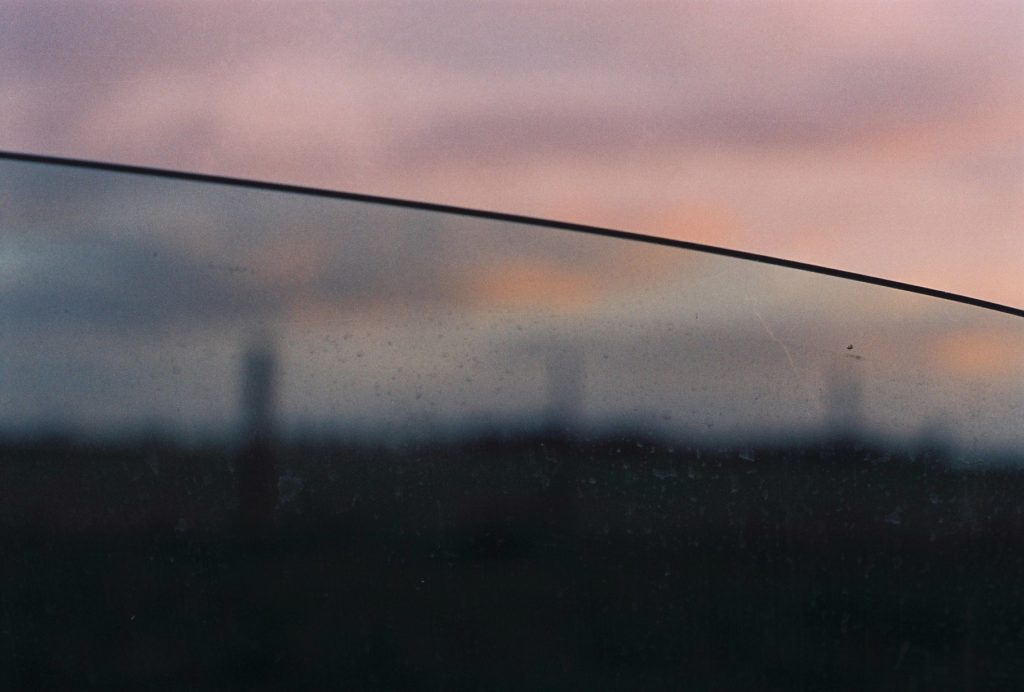
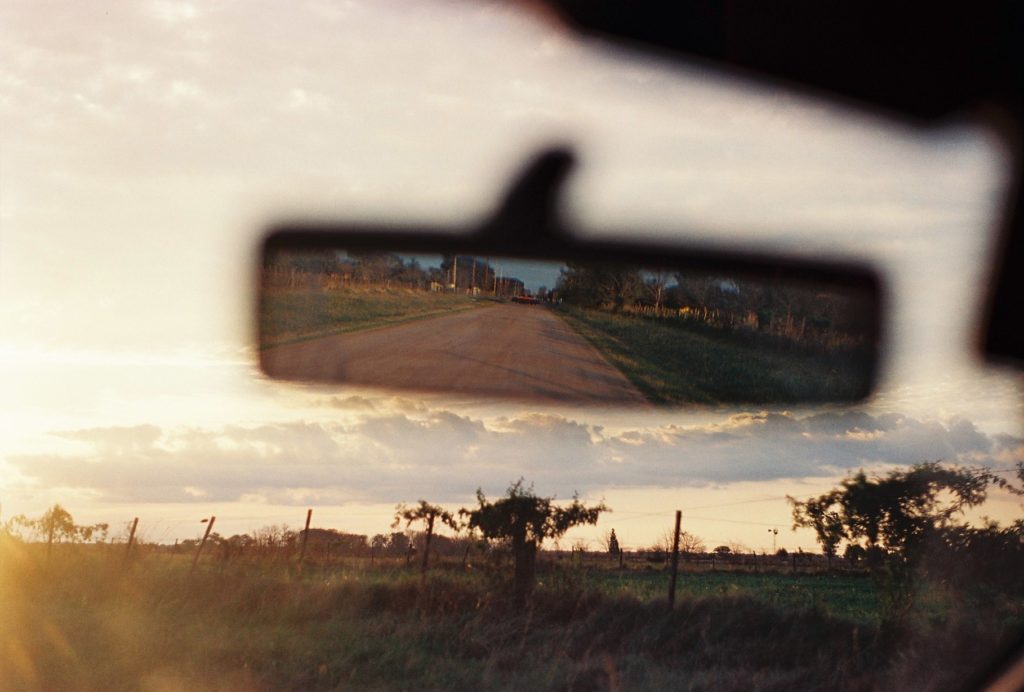
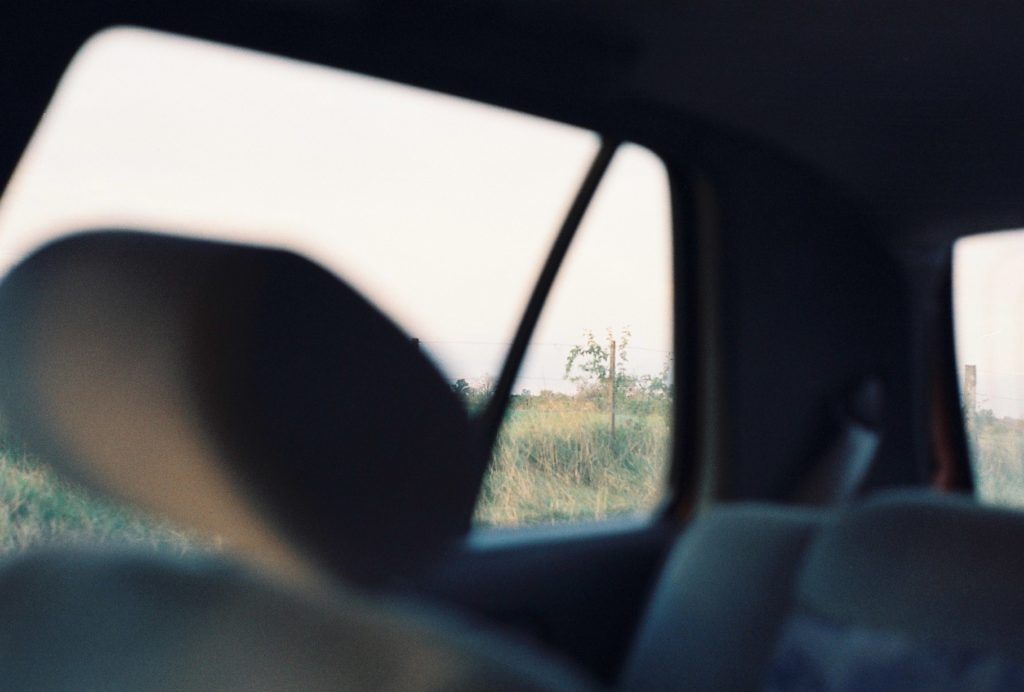
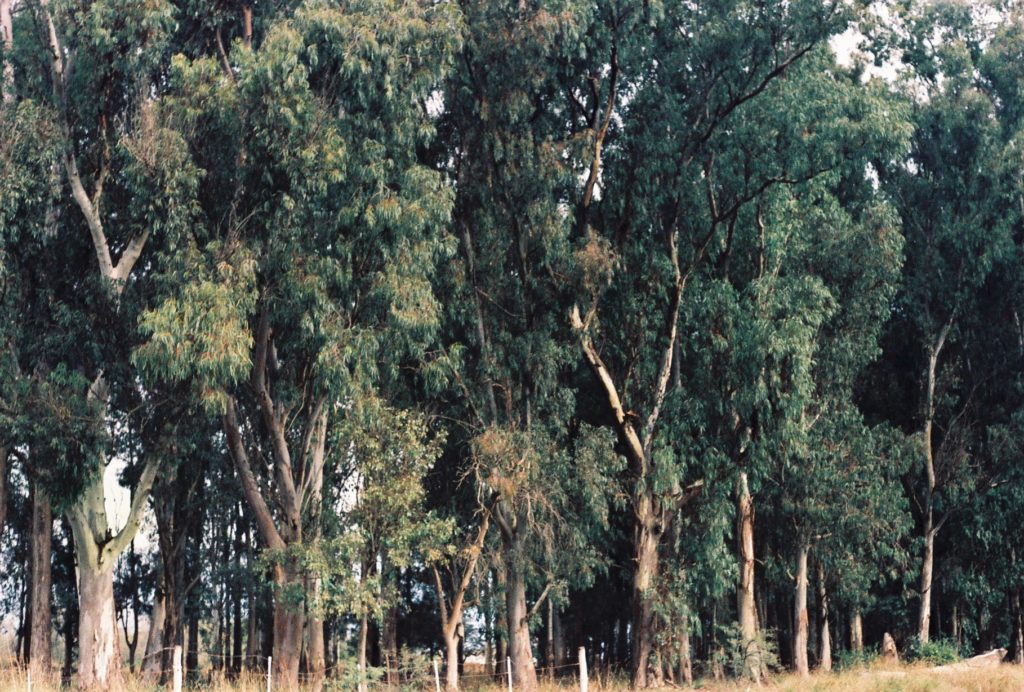
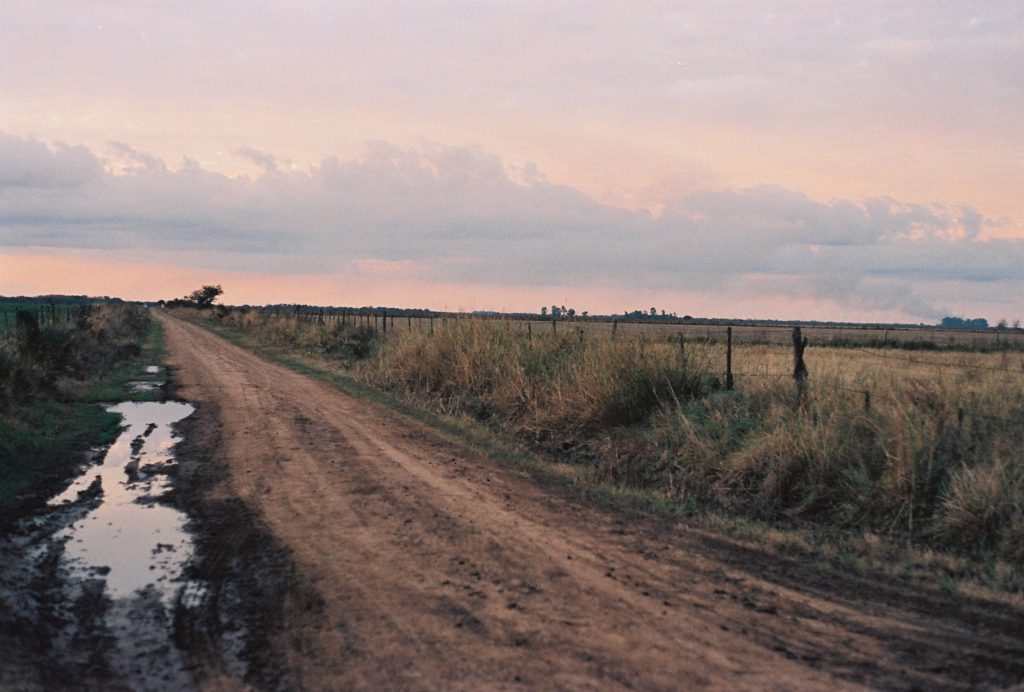
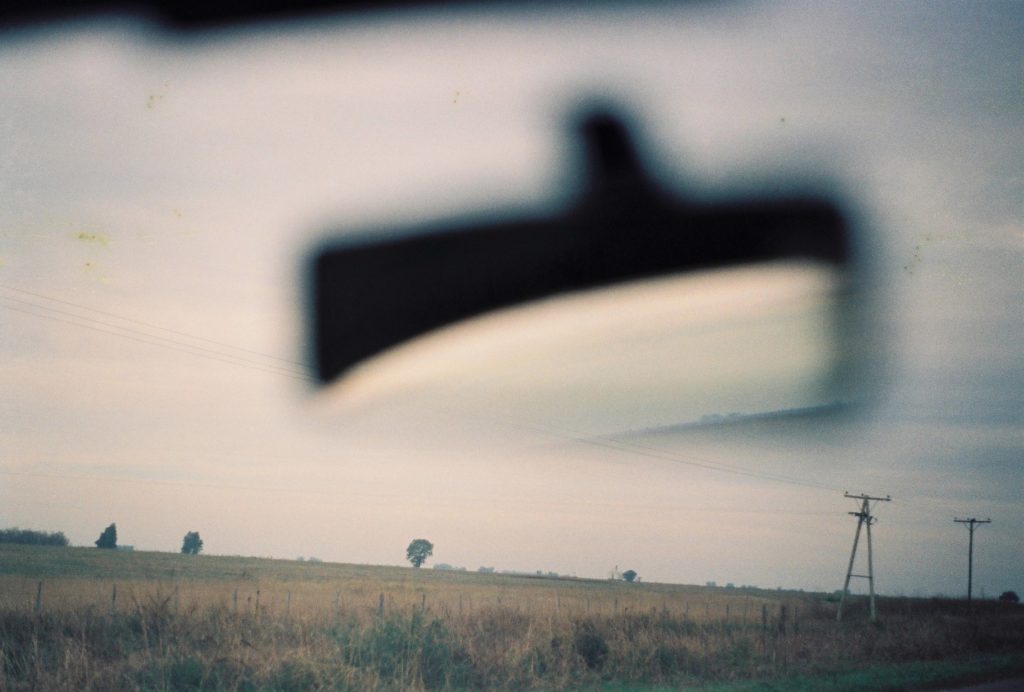
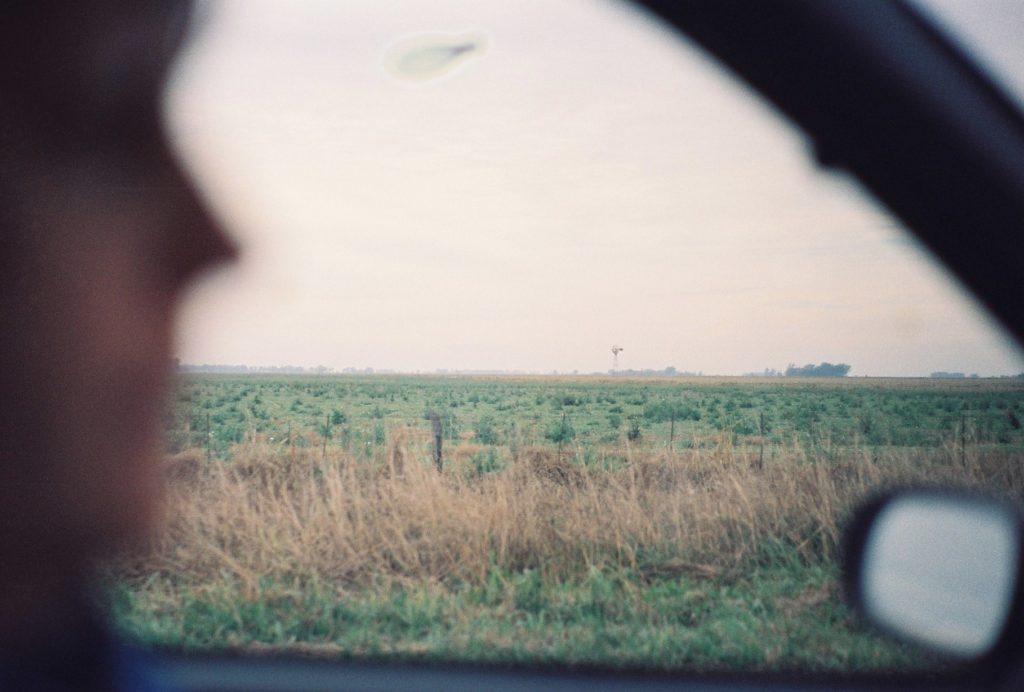
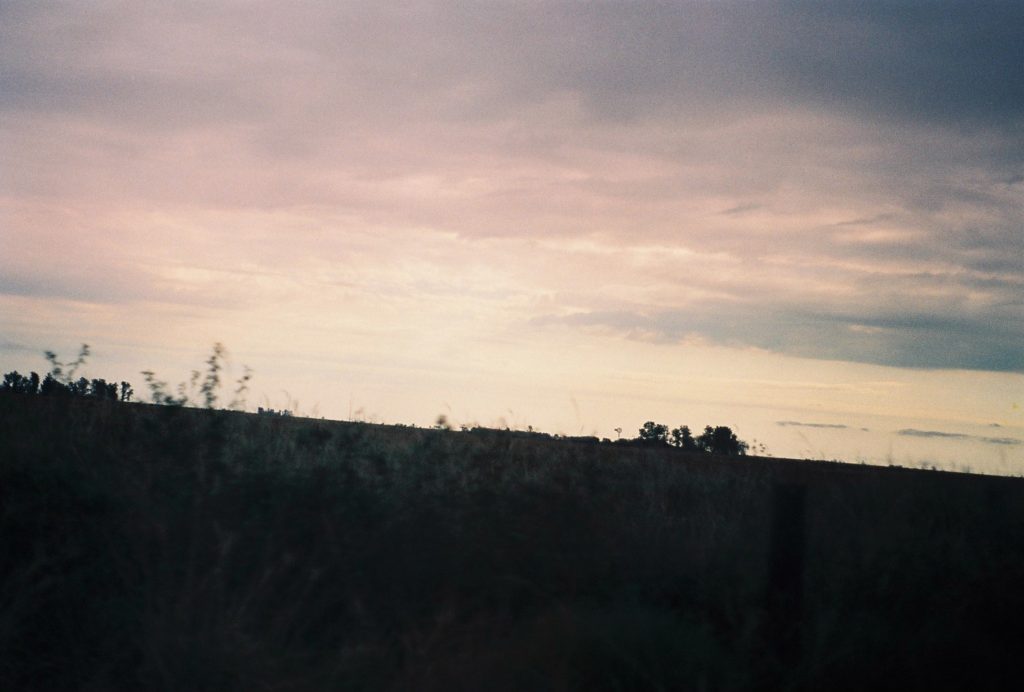
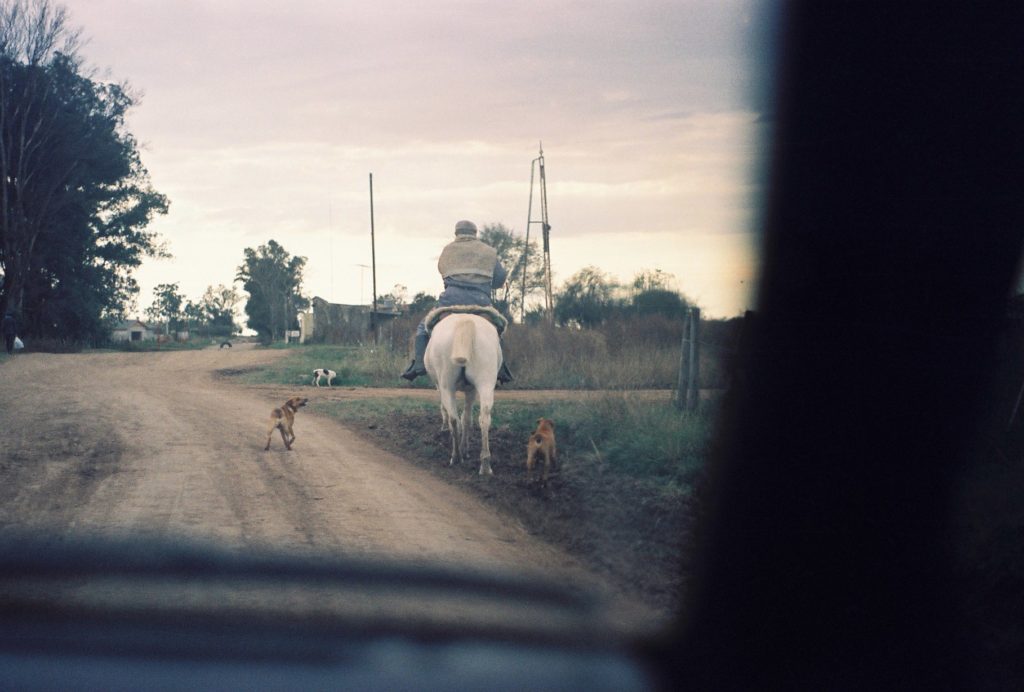
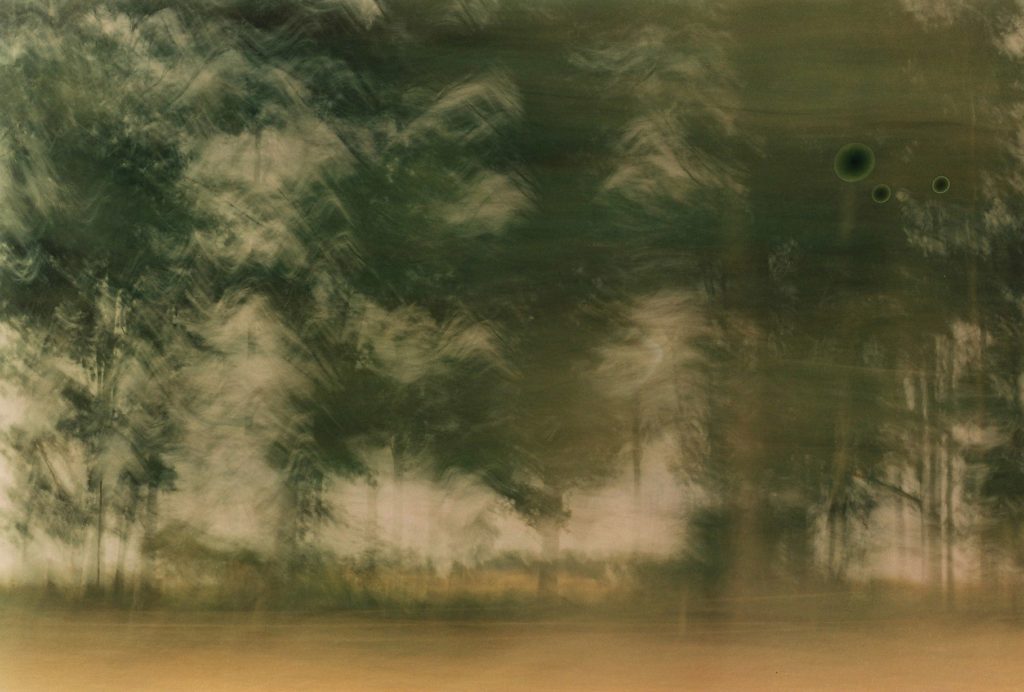
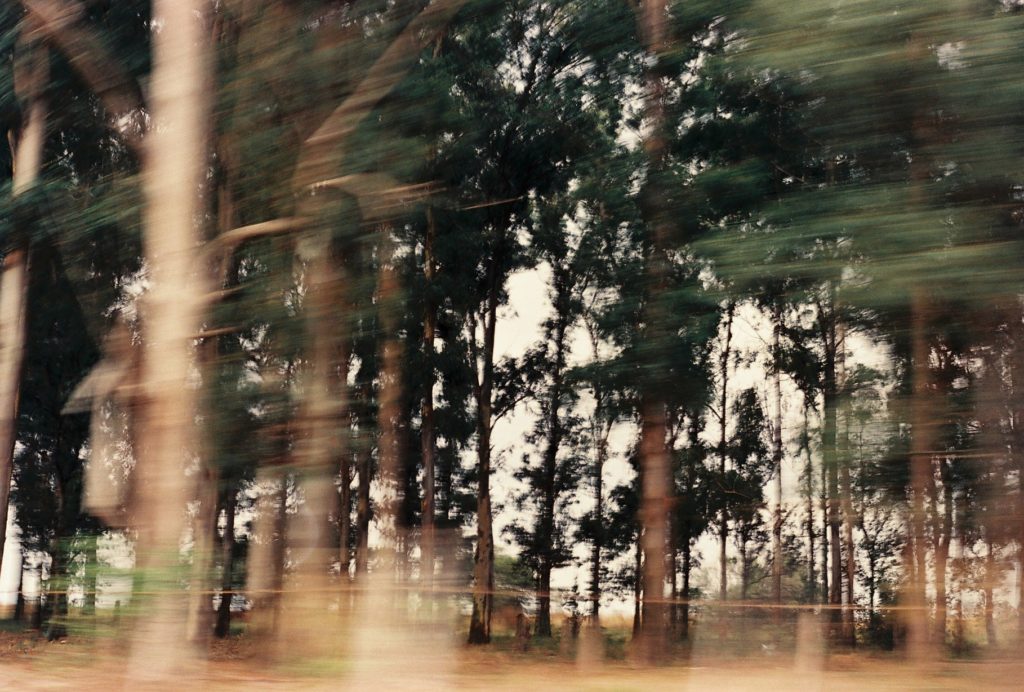
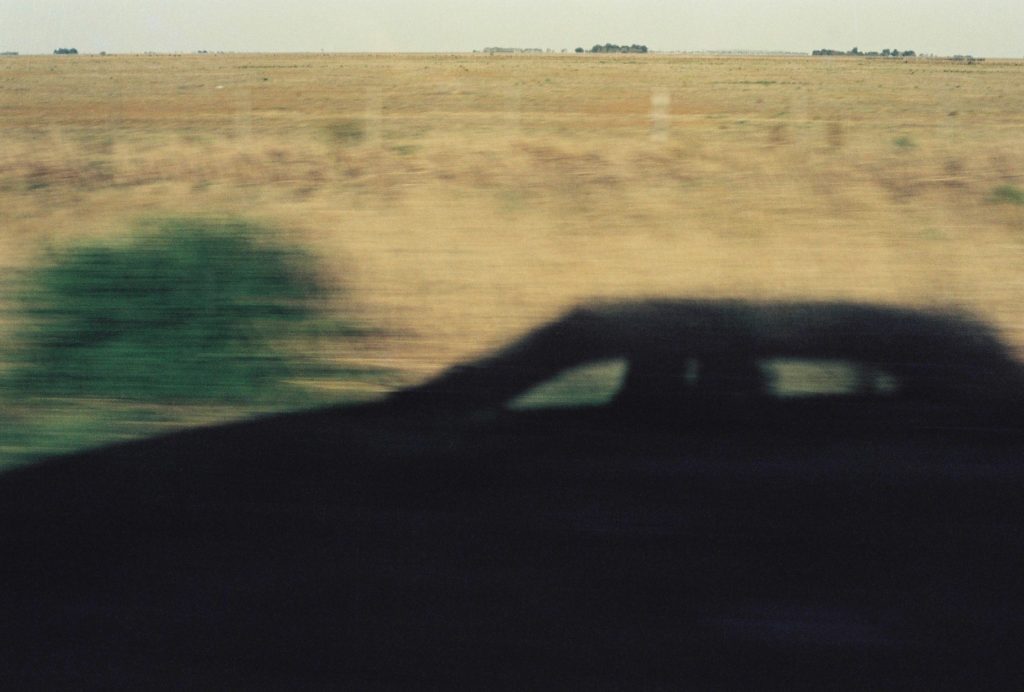
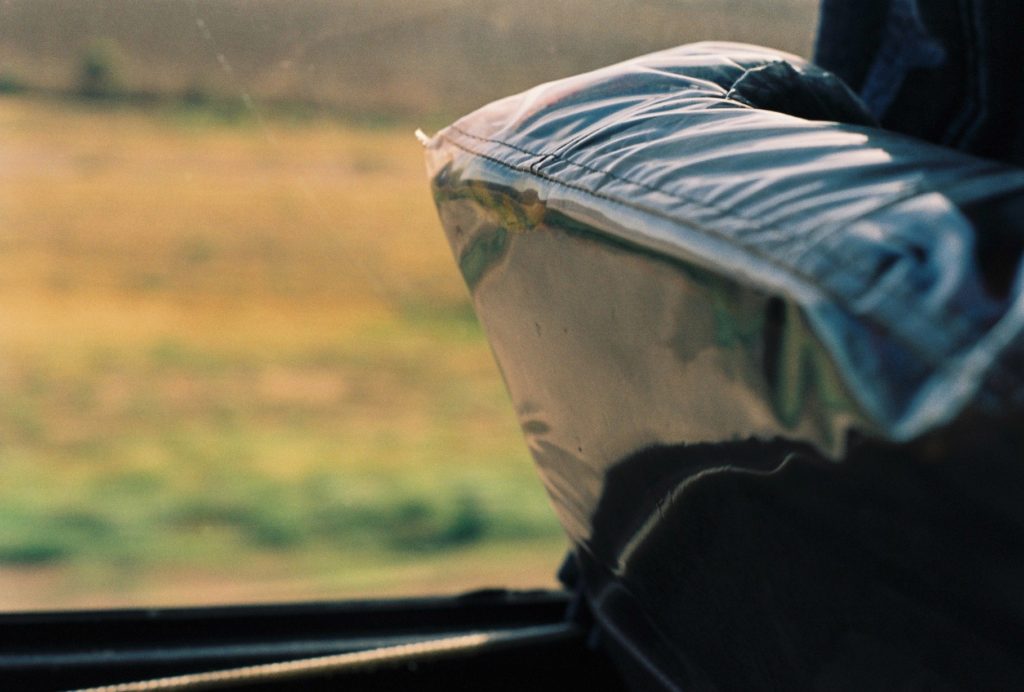
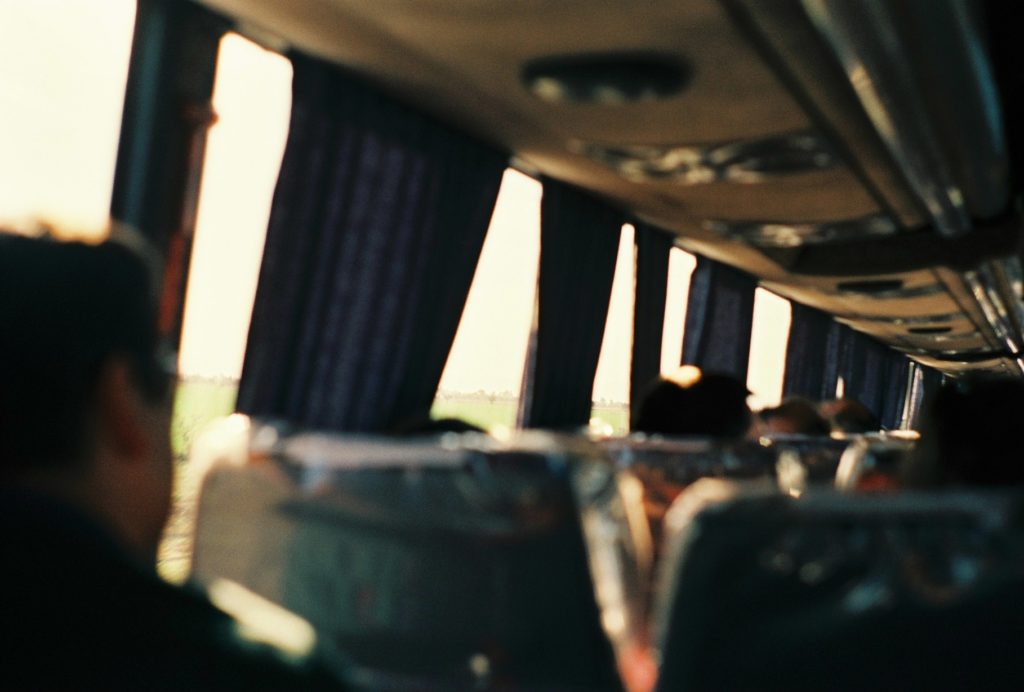
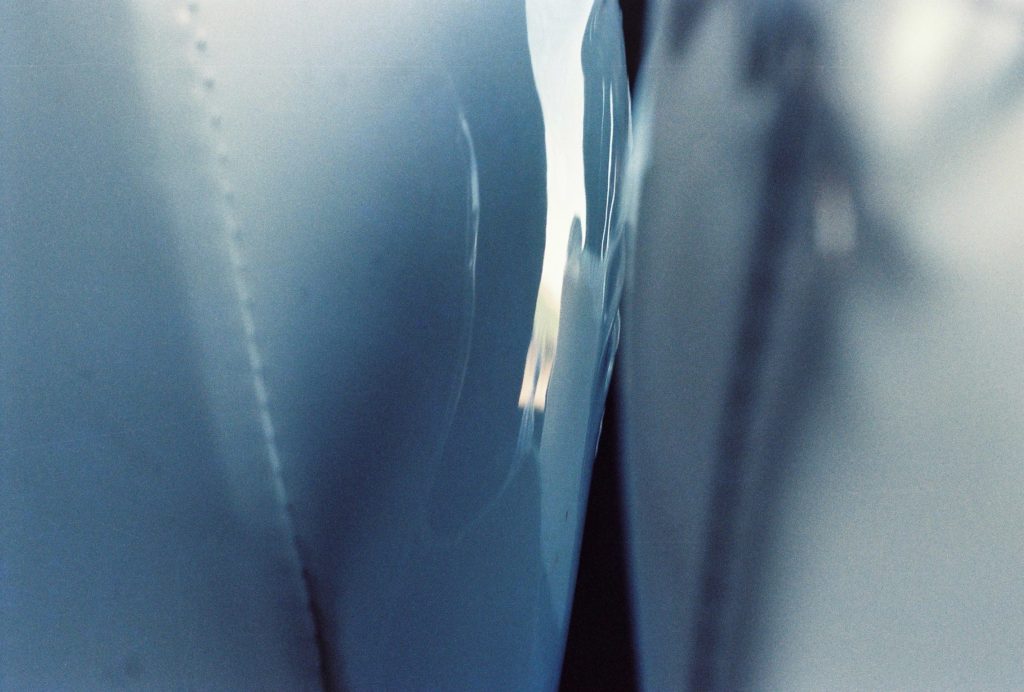
Esta serie retoma un procedimiento previo de copiar textos manuscritos. En este caso se trata de imágenes que circulan por internet con reproducciones de las escrituras de diversas épocas y autores. El medio de la copia es la pantalla de la computadora que se comporta como un banco de luz y permite calcar las imágenes en papel. Como en las series anteriores, esta indaga el límite entre la espontaneidad del gesto y su mecanización, la naturaleza íntima de un texto y su puesta en circulación pública y los límites entre lo singular y lo colectivo que siempre están en juego en la vieja práctica de la escritura manual.
Tinta y lápiz sobre papel | Tamaños variados
Ilustraciones para la novela Florentina, de Eduardo Muslip, publicada en 2017 por Blatt&Rios, Buenos Aires.
Lápiz y tinta sobre papel | 21 x 29,7 cm ; 21 x 14,8 cm
Tinta y lápiz sobre papel | 21 x 29,7 cm; 29,7 x 21 cm
Esta serie de dibujos copian algunos manuscritos del filósofo alemán Walter Benjamin, el pensador que reflexionó, entre otras cosas, sobre la naturaleza de la copia mecánica y su relación con el arte. Algunos de ellos son notas para El libro de los pasajes, su proyecto inacabado, otros son fragmentos de teorías complejas o una simple cuenta del costo de un almuerzo, juegos de palabras para dormir, cosas triviales de la vida cotidiana que se convirtieron en documentos. En este intento de copiar la letra manuscrita, un rasgo de la individualidad casi tan imposible de imitar como una huella digital, el dibujo se vuelve una forma de proximidad, atravesando el tiempo y el espacio.
Tinta sobre papel | 29,7 x 21 cm
Esta serie de dibujos aborda un un grupo de líneas gráficas ligadas al recuerdo, al gesto autómatico, a las imágenes residuales de un tipo de ilustración presente en libros como los de la colección Robin Hood, donde las imágenes recrean de manera libre el grabado del siglo XIX. Historietas, surrealismo, kitsch, ornamento y gesto se van cruzando, se trenzan, se alejan, para jugar con un eco cada vez más distorsionado de las formas originales. Diamante recorre el borde móvil entre lo figurativo y lo abstracto, lo geométrico y lo orgánico, la escritura y el dibujo; en definitiva busca los límites entre lo espontáneo y lo aprendido dentro del gesto de dibujar.
Tinta y lápiz sobre papel | Tamaños 42 x 29,7 cm; 29,7 x 42 cm; 21 x 14, 8 cm
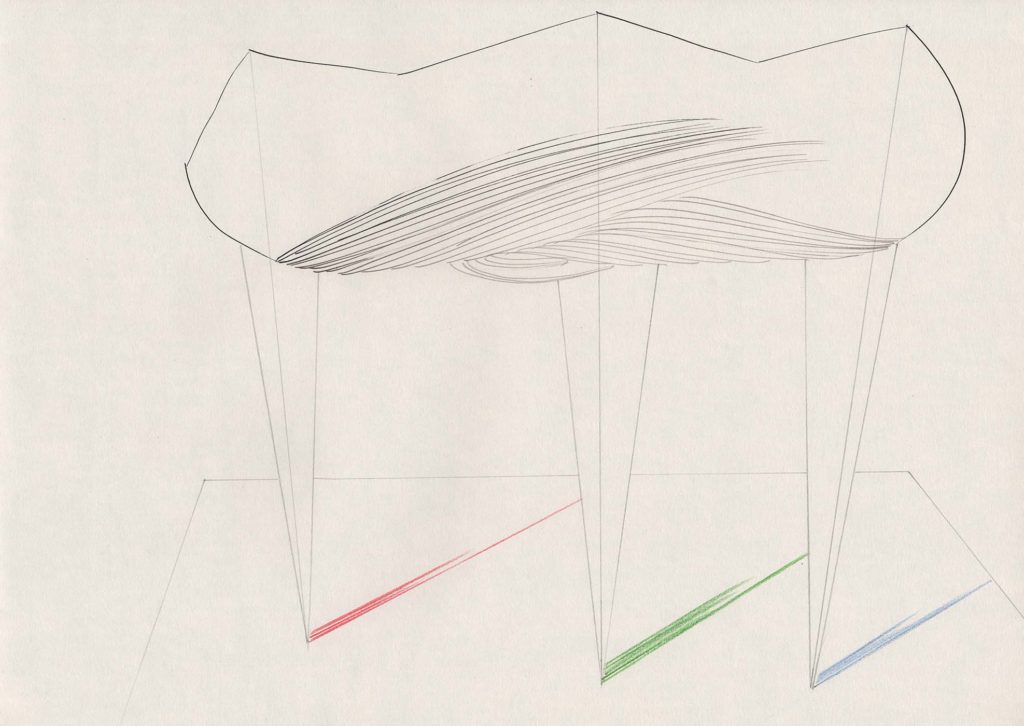
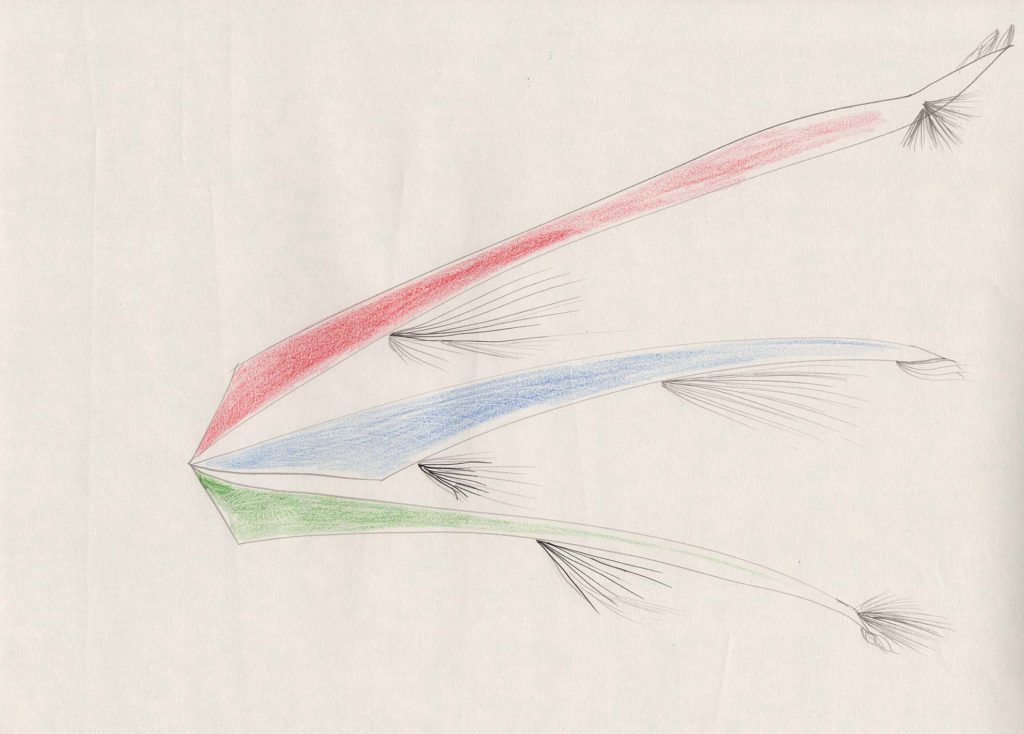
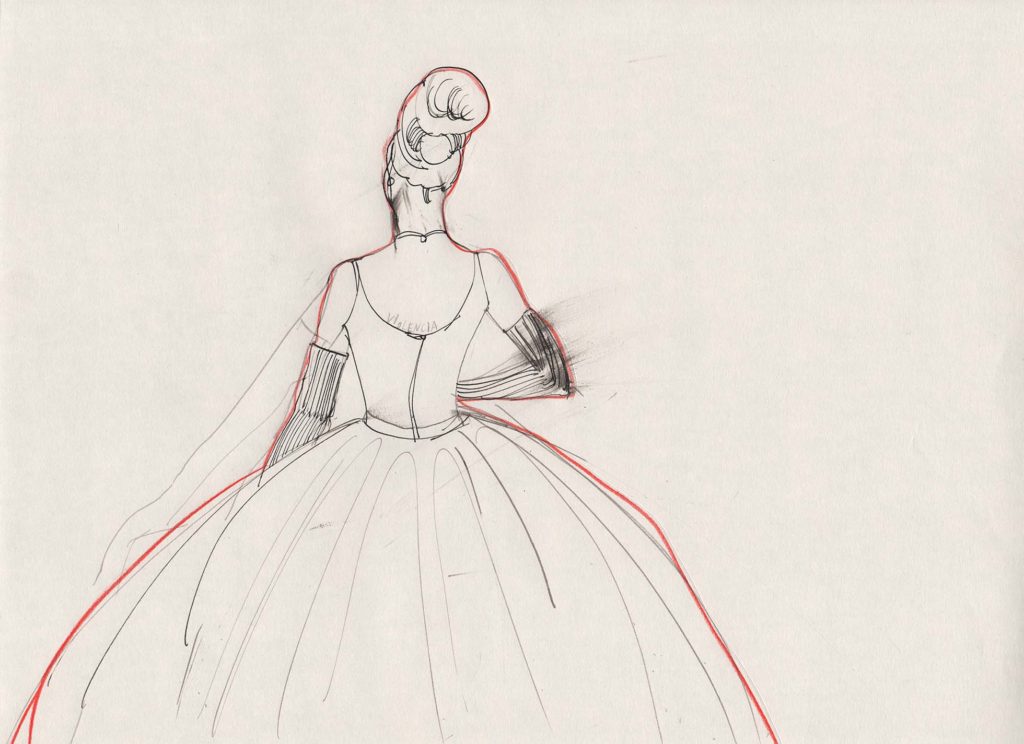
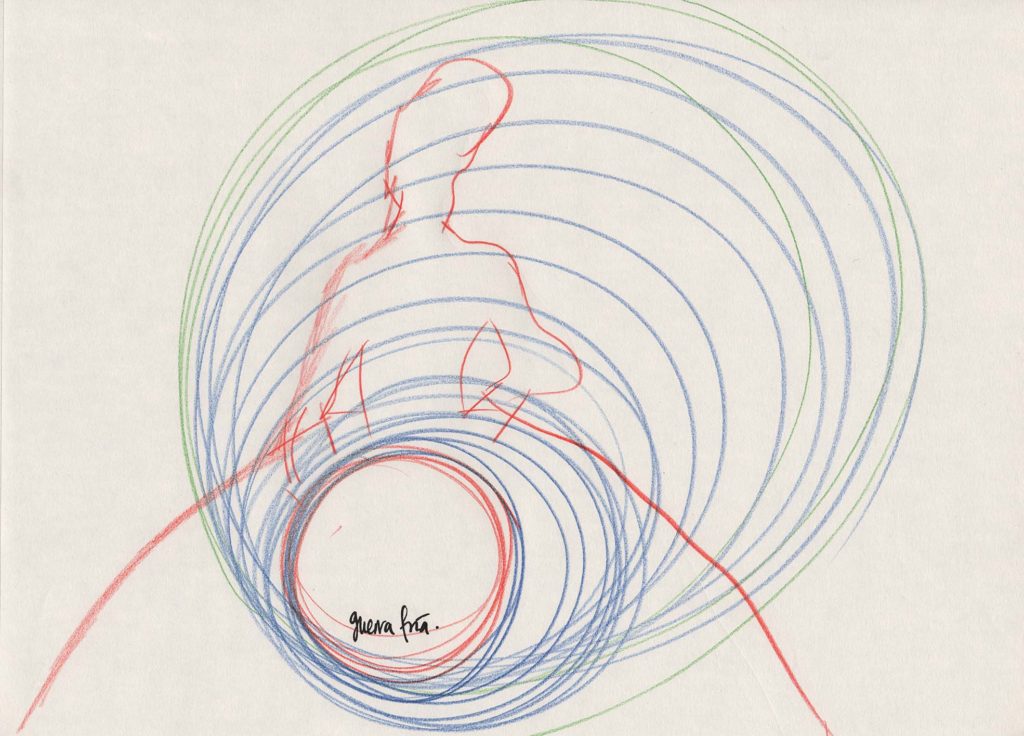
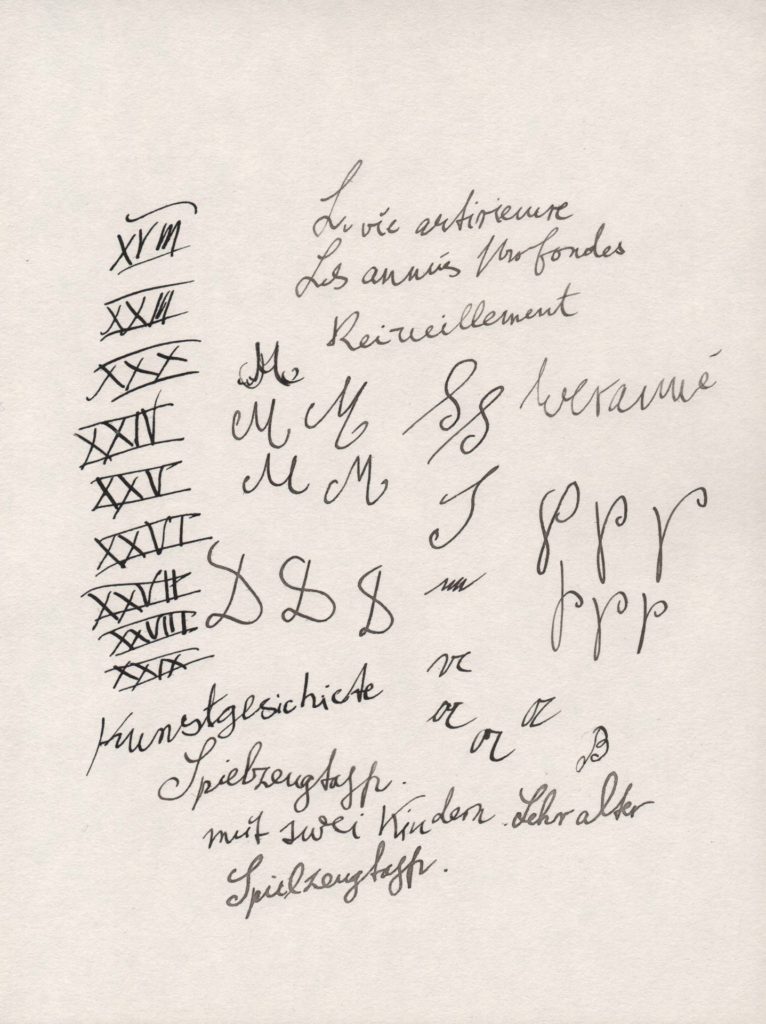
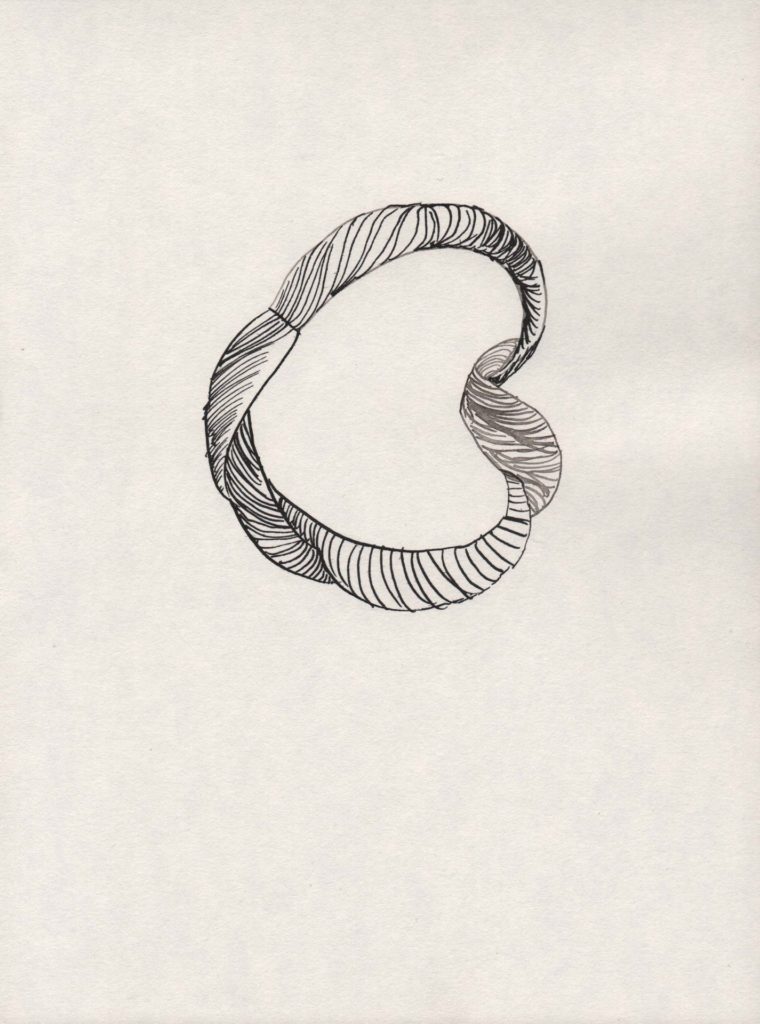
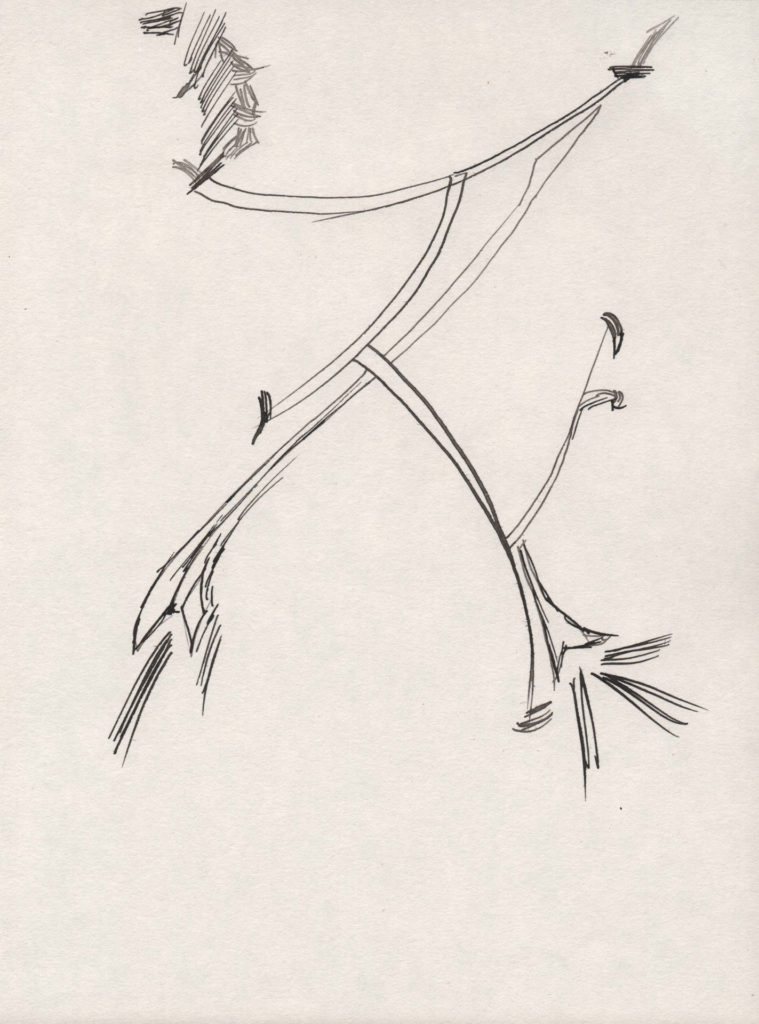
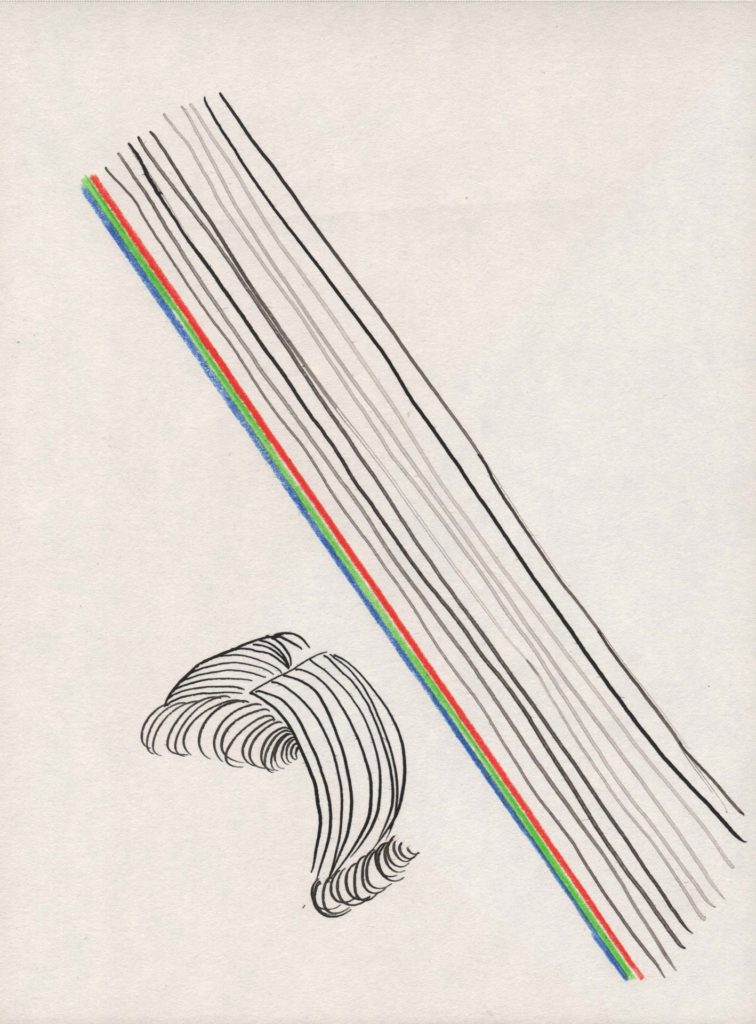
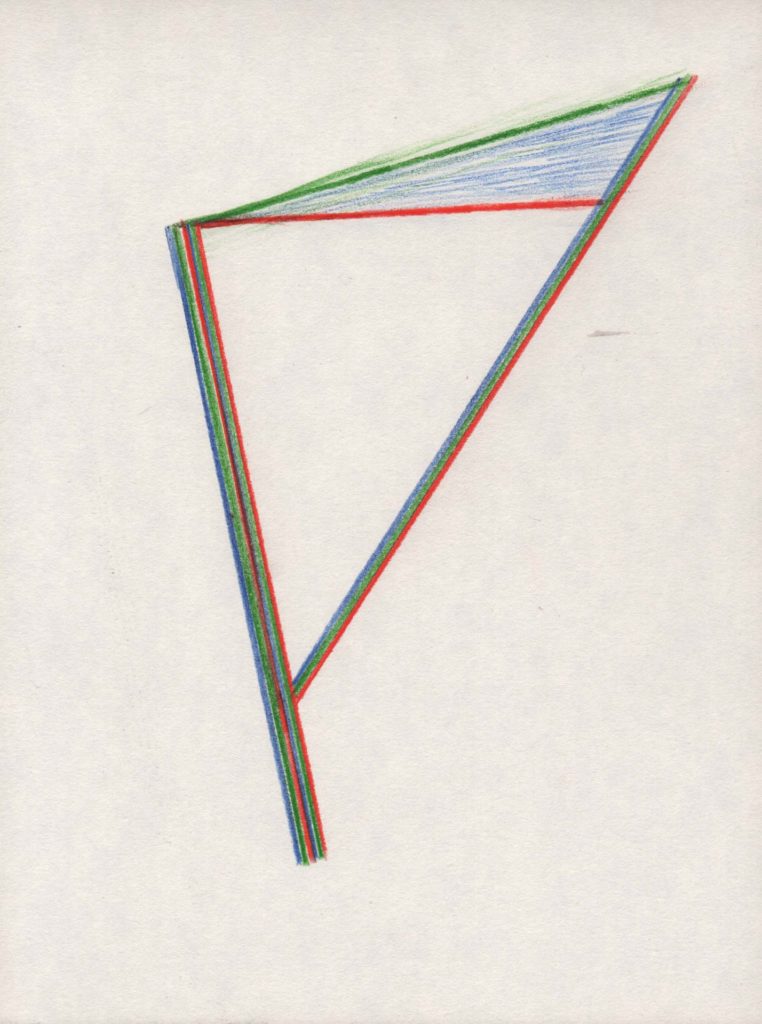
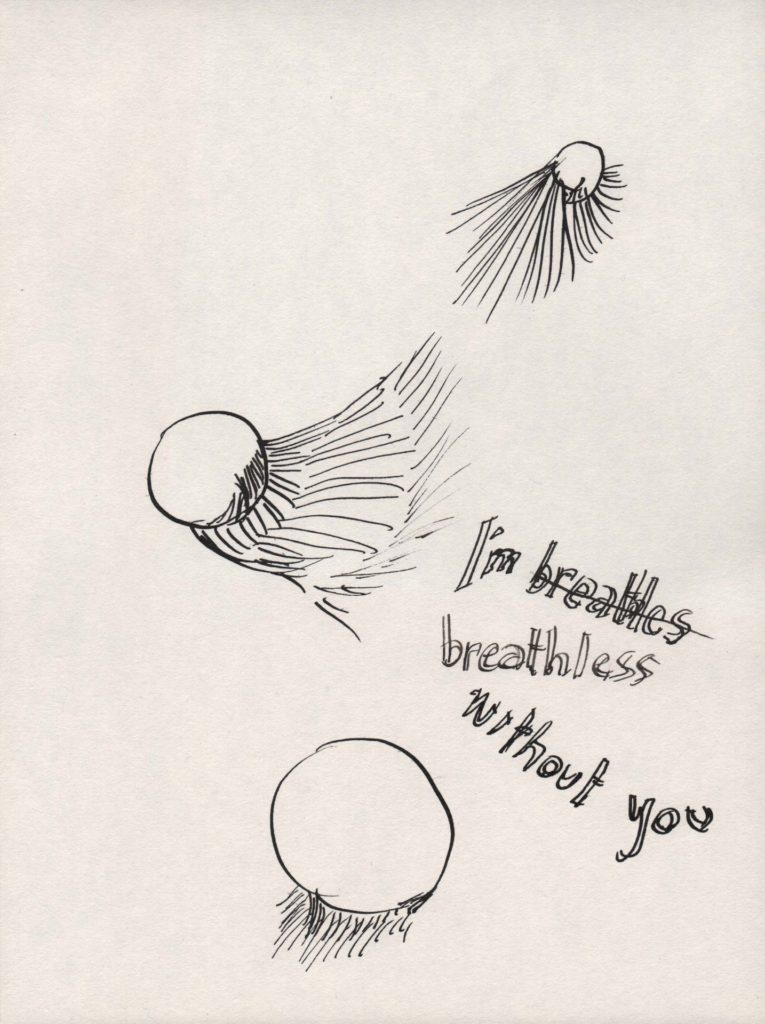
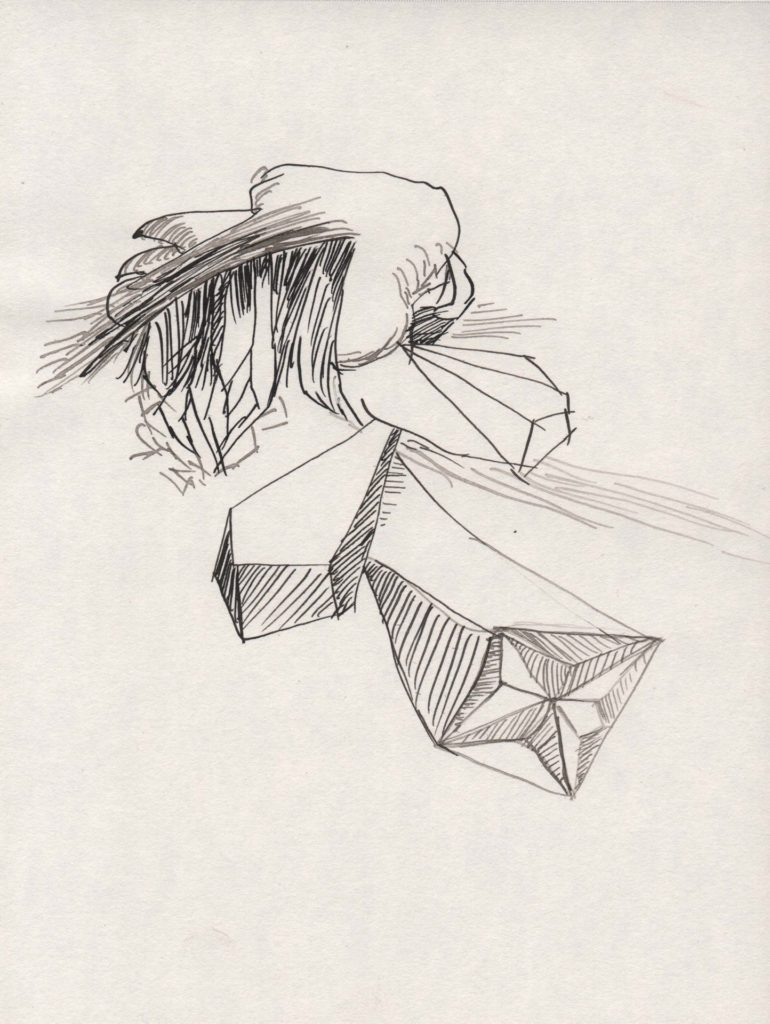
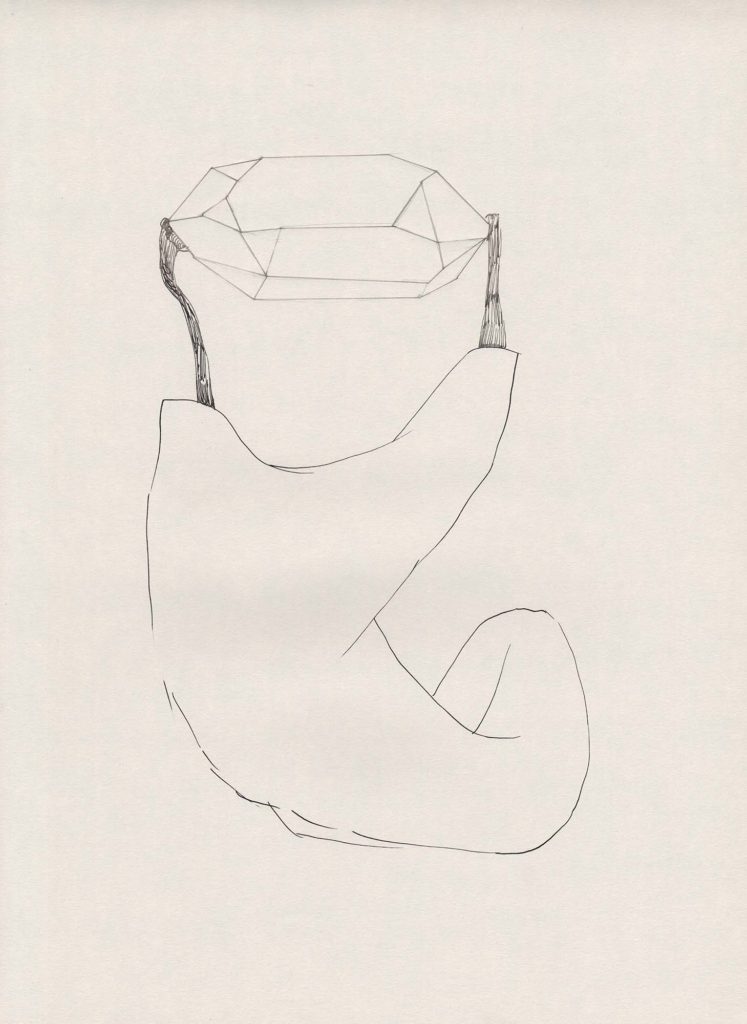
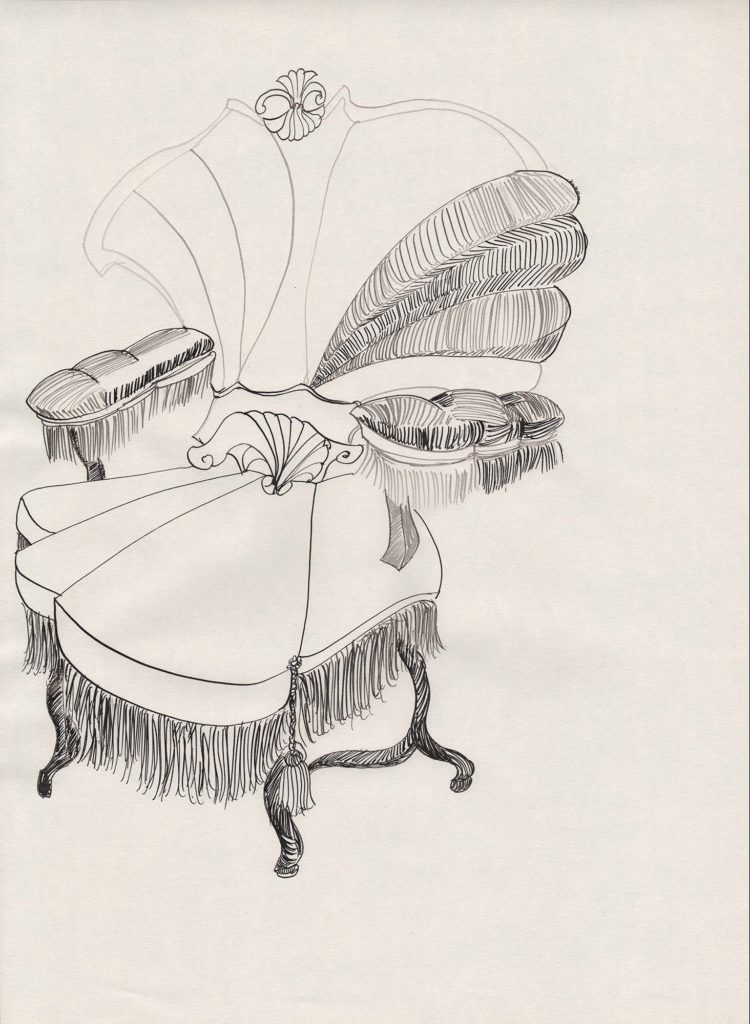
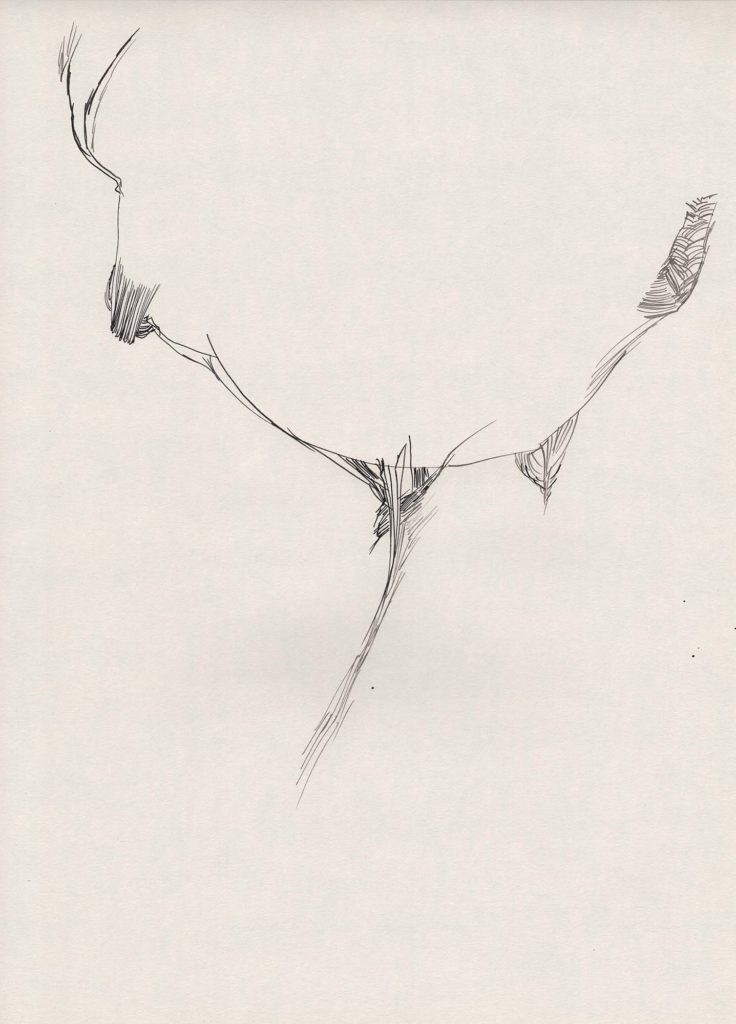
Esta serie acompañó el proceso de investigación en torno al Libro de los Pasajes, de Walter Benjamin, para realizar el video-ensayo B.
La calle se vuelve el tema central en esta serie: desplazamientos, palabras, personajes e imágenes fugaces que quedan después de las caminatas, como impresiones en la retina al cerrar los ojos, como ecos de las ideas que se activan al andar.
Tinta sobre papel | 21 x 29,7 cm
Gallery 1313, Toronto | 10 al 20 de Octubre.
Curaduría: Laura Preger
Retrospectiva de video presentada por Colectivo Toronto y Club Cultural Matienzo, con el soporte de Ontario Arts Council y Fondo Metropolitano de la Cultura, las Artes y las Ciencias de la Ciudad de Buenos Aires.
Esta serie toma como punto de partida la traducción entre idiomas, para reflexionar sobre la relación entre forma y contenido y probar si es posible derribar esta dicotomía. ¿Es la traducción un cambio de formas mecánico o construye otra realidad? La traducción entre las palabras se convierte aquí en una transformación de la imagen y de la escritura del sonido.
Tinta sobre papel | 35 x 20 cm
Música es parte de un proceso de obras realizadas a manera de un inventario emocional, si tal paradoja fuera posible. Recreando listas de canciones y álbumes de música popular, copiando sus letras o usándolas como punto de partida de los dibujos, esta serie hace un viaje por la memoria musical y emotiva, ahí donde es muy difícil encontrar la distinción entre lo individual y lo colectivo. Recordamos las canciones que amamos como hitos de nuestra vida personal pero a la vez compartimos ese bagaje con muchos otros y el sonido trae a la superficie esa memoria.
Serie Música
Tinta sobre papel | 29,7 x 21 cm | 50 dibujos
MUESTRA INDIVIDUAL | HACHE Galería | Junio – Agosto
Curaduría: Federico Baeza
En el año 2017, Leticia Obeid realizó una pieza en video que acompañó la ejecución en el auditorio principal del Museo Nacional Centro de Arte Reina Sofía, Madrid, de la ópera contemporánea L ́officina de la resurrezione, de Fabián Panisello, con textos de Erri de Lucca. Una reelaboración de ese material filmado en el Museo Nacional de Ciencias Naturales Bernardino Rivadavia, y exhibido por primera vez aquí, es el punto de partida para un proceso de reencuentro con la pintura.
Muestra individual | Museo de Arte Contemporáneo de Buenos Aires (MACBA) | Agosto – Octubre
Curaduría: Teresa Riccardi
Esta exhibición llevaba el nombre del video principal de la muestra, una pieza que superpone dos capas de un mismo film, Historia de Filadelfia, de George Cukor (1940) en su versión original en inglés y en su versión doblada al español. Un leve desfasaje entre ambas genera una especie de fantasma en la imagen, residuo y punto de intersección a la vez. En esta muestra el video se instaló en el espacio sectorizando las áreas de cada idioma, por lo que la película podía mirarse en inglés o en español de acuerdo a la ubicación en la sala. Un segundo video Jano & Marcel, revisita la obra de Duchamp, Étant Donnés (1946-1966) . El otro eje de la muestra era la serie de fotos El canto de Jano, que establece diálogos y conexiones entre textos y autores, géneros y época.
Sección Dixit | ArteBA 2016 | La Rural, Argentina.
Afinidades conocidas e insospechadas en un recorrido por la producción artística de nuestro tiempo.
Curaduría: Federico Beza, Lara Marmor, Sebastián Vidal Mackinson
Nicanor Aráoz, Gabriel Baggio, Javier Barilaro, Diego Bianchi, Jane Brodie, Eugenia Calvo, Laura Códega, Claudia Del Río, Valentín Demarco, Lucas Di Pascuale, Zoe Di Rienzo, Matías Duville, Víctor Florido, Marcelo Galindo, Sebastián Gordín, Vicente Grondona, Jorge Gumier Maier, Carlos Huffmann, Pablo Insurralde, Guillermo Iuso, Roberto Jacoby y Alejandro Ros, Daniel Joglar, Fabio Kacero, Irina Kirchuk, Fernanda Laguna, Nani Lamarque, José Luis Landet, Valentina Liernur, Lux Lindner, Lucrecia Lionti, Gustavo Marrone, Miguel Mitlag, Leticia Obeid, Marcelo Pombo, Déborah Pruden, Juan Carlos Romero, Rosa Chancho, Pablo Rosales, Daniel Santoro, Mariela Scafati, Cristina Schiavi, Rosana Schoijett, Marcela Sinclair, Juan Stoppani, Axel Straschnoy, Eduardo Stupía, Mariana Telleriia, Trulalala – Claudia del Río & Carlos Herrera, Leila Tschopp, Nahuel Vecino, Adrián Villar Rojas, Román Vitali, Ivana Vollaro, Registros Audiovisuales Archivo Gustavo Bruzzone.
Dibujos de la serie Diamante (2011) | Tinta y lápiz sobre papel, medidas variables.
MALBA | Marzo – Julio.
Curaduría: Lux Lindner
Obra: La letra de B, 2012. Tinta sobre papel.
“A diferencia de otros artistas de esta muestra, Leticia Obeid, persona a quien todo espontaneísmo expresivo resulta extraordinariamente sospechoso, se orienta a la ciencia blanda, sociológica. No siempre fue así. Cuando juntaba piedritas que le ofrecía la Pampa Gringa, que no eran muchas, quería ser geóloga, y esto derivó tal vez en una geología de la sociología. (La geología fue también la ciencia preferida de Lévi-Strauss, otro defenestrado por Reynoso… ¿quién me queda sin mancha de tuco a esta altura?). A los efectos de nuestra muestra, el resultado son dibujos que Obeid hace con una estrategia fría y desalmada: copiar la letra del teórico de la copia, Walter Benjamin”.
Héctor Meana, Aimé Pastorino, Eduardo Santiere, Julián Terán, Leticia Obeid, Nuna Mangiante, Pablo La Padula, Rodolfo Marqués, Julián D’Angiolillo .
MUAC | Museo Universitario De Arte Contemporáneo | UNAM México | Mayo – Agosto.
Curaduría: Alejandra Labastida
“Dobles es una investigación que explora la historia política y económica del doblaje en México. Obeid problematiza el desdoblamiento entre el cuerpo y la voz que caracteriza este oficio. El capital económico de los actores de doblaje es la capacidad de desprenderse de su voz, transformarla y prestársela a otro cuerpo. pero al no tener un cuerpo visible y reconocible en el medio, son fácilmente reemplazables y descartables. Estas entrevistas revelan las potencialidades y riesgos de esta condición, desde sus injusticias laborales hasta el ingenio con el que los actores de la edad de oro mexicana burlaron el sistema de censura que prevalece sobre los medios.”
Stedelijk Museum Bureau Amsterdam | Abril – Junio
Curaduría: Madelon van Schie
Jonathas de Andrade, Abraham Cruzvillegas, Alfredo Márquez, Leticia El Halli Obeid, Oscar Abraham Pabón, Wilfredo Prieto, Laercio Redondo.
“El derecho a la ciudad reúne el trabajo de siete artistas de América Latina que, a su manera, examinan la vida en la ciudad y el uso del espacio urbano. Se ven a sí mismos como aliados de los habitantes de las ciudades marginadas de Buenos Aires, Ciudad de México, Santa Cruz de la Sierra, Brasilia, Recife y Lima, respectivamente. Con esa alianza como punto de partida, abordan temas que incluyen la relación entre el centro y la periferia, la ocupación y la autoconstrucción, el diseño de la ciudad, la pérdida de culturas indígenas y el uso y la experiencia del espacio público. El punto de partida de la exposición es la idea de que las estructuras espaciales y sociales de una ciudad están definidas por relaciones de poder históricas (y contemporáneas), pero busca, de una manera abrumadoramente alegre, iluminar cómo las relaciones de poder y las leyes y regulaciones que fluyen de ellas pueden ser subvertidas.”
Texto curatorial de Madelon Van Schie
Akbank Sanat, Estambul | Febrero – Abril.
Curaduría: Alejandra Labastida
“Deleuze afirma que, a diferencia del parecido, la repetición es un acto que surge solo en relación con aquello que no tiene igual o equivalente y, por lo tanto, se refiere a singularidades no intercambiables y no reemplazables. Es esencialmente una fuerza que opone lo singular –como transgresión o excepción– a lo particular capaz de ser subsumido por las leyes. El objetivo de este proyecto es postular que la proliferación de prácticas artísticas generadas en torno a estrategias de apropiación y citas (la traducción y recreación de piezas o eventos históricos) responde a esta fuerza que afirma el estado político de la singularidad del ser no reemplazable versus el paradigma domesticado de lo equivalente e intercambiable.”
Alejandra Labastida, texto curatorial (fragmento).
Rossella Biscotti, François Bucher, Tania Bruguera, Jeremy Deller, Leticia El Halli Obeid, Jon Mikel Euba, Iain Forsyth & Jane Pollard, Mario García Torres, Sanja Iveković, Martin Jenkinson, Magdalena Leite, Jorge Méndez Blake, Fabio Morais, Vicente Razo, Danh Vo, Ming Wong, Artur Zmijewski.
ArteBA | La Rural, Buenos Aires, Argentina.
Curaduría: Lara Marmor
Dobles instaló una caja negra en medio de la feria de arte para que los visitantes pudieran sentarse a ver y escuchar un video documental sobre el trabajo oculto de lo doblajistas. El humor y la reflexión sobre el lenguaje y sus políticas se cruzan en estas entrevistas a los dueños de voces icónicas para los espectadores latinoamericanos.
El proyecto ganó el premio del Programa Jóvenes Curadores organizado por arteBA y patrocinado por el Banco Ciudad.
MUESTRA INDIVIDUAL | Galería 713, Buenos Aires | Junio – Agosto.
Curaduría: Lara Marmor
La temática de este conjunto de dibujos y videos gira en torno a la búsqueda de unas imágenes recordadas, imaginadas, recreadas a través de la memoria, donde se mezclan algunas referencias muy diluidas al paisaje del siglo XIX, con cierto estilo de ilustración de los libros infantiles, y otras iconografías. La instalación de estas obras en el espacio era una especie de collage fluido, que generaba a la vez proximidad y extrañamiento.
Entre siempre y jamás, Pabellón del IILA, Arsenale, Isolotto.
Curaduría: Alfons Hug y Paz Aburto Guevara
Concebida como una continuación de la muestra Menos tempo que lugar, esta exhibición convoca a un artista por cada país de cada nación hispano-americana replicando en cierta forma la estructura tradicional de envios nacionales de la Bienal de Venecia. El hilo conductor de estas obras es la reflexión sobre el significado de la independencia, la autonomia y las preguntas en torno a las identidades nacionales.
Para esta muestra Dictados se volvió bilingüe, como lo fue en su origen el texto de Bolívar, escrito en español para ser traducido y publicado en inglés.
Leticia El Halli Obeid (Argentina), Narda Alvarado (Bolivia), Neville D ́Almeida (Brasil), Sebastián Preece (Chile), Juan Fernando Herrán (Colombia), Sila Chanto (Costa Rica), Reynier Leyva Novo (Cuba), María Rosa Jijón (Ecuador), Walterio Iraheta (El Salvador), Regina José Galindo (Guatemala), Adán Vallecillo (Honduras), Julieta Aranda (México), Rolando Castellón (Nicaragua), Humberto Vélez (Panamá), Claudia Casarino (Paraguay), Fernando Gutiérrez (Perú), David Pérez Karmadavis (República Dominicana), Martín Sastre (Uruguay), Alexander Apóstol (Venezuela)
Curaduría: Alfons Hug y Paz Aburto Guevara
Esta muestra fue comandada por los Institutos Goethe de Latinoamérica para conmemorar el bicentenario de la independencia de España, que las naciones americanas fueron cumpliendo sucesivamente a partir del año 2009. Tomando como punto de partida La carta de Jamaica, un texto de Simón Bolívar, cada artista hizo su obra revisando aquellas palabras que fueron escritas en 1815 como un llamado a construir un continente unido políticamente y poniéndolas en contraste con diversas realidades, historias, mitos y problemáticas locales.
La muestra itineró por Buenos Aires, Córdoba, Santiago de Chile, Montevideo, Asunción, La Paz, Quito, Medellín, Cusco, Caracas, Curitiba, Porto Alegre, Rio de Janeiro, Belo Horizonte, y otras ciudades.
6a Bienal do Mercosul, Porto Alegre | Curador general: Gabriel Perez Barreiro | Exhibición Conversas (Conversaciones)
Curador: Alejandro Cesarco
All my dreams have come true, video, Annika Ström, Suecia, 2004; Enclosures, video, Nesrine Khodr, Líbano, 2004; La novia del colono, pintura, Lux Lindner, Argentina, 2005; Una curva gigante se vuelve recta, video, Leticia El Halli Obeid, Argentina, 2006.
“Invitamos a Leticia a participar con una obra titulada Una curva tan gigante que parece recta, un video que hace referencia a una fábrica de máquinas cosechadoras que existió en un pueblo de la provincia de Córdoba, en Argentina. En los 90 y como consecuencia de la imposición de políticas de corte neoliberal, dicha fábrica es vendida y luego ´restructurada´ por varias empresas multinacionales hasta que éstas deciden que ya no es productivo mantenerla abierta. La fábrica en cuestión había sido fundada y trabajada por la familia de Leticia desde la década del 50. Leticia invita a Lux Lindner con obra que hace referencia a la historia del arte y política argentina y a Nesrine Khodr con un video que vuelve explícita esa de idea de cómo en general las fronteras permiten el tráfico en una sola dirección.”
Alejandro Cesarco, fragmento del catálogo de la exposición, p. 160.
Premio Petrobrás | ArteBa, Buenos Aires 2006.
El trabajo consistía en un video y una publicación que reconstruían, de forma complementaria, la historia de la fábrica de cosechadoras Araus, que existió en la localidad de Noetinger, provincia de Córdoba desde fines de la década del 40, y que atravesó todas las vicisitudes económicas típicas en la industria argentina hasta su venta, en la década del 90, a una multinacional. El video mezcla material filmado durante una cosecha de soja en la llanura pampeana en el 2006, con filmaciones en Super 8 del archivo de la fábrica.
La feria de arte se realiza en uno de los pabellones de La Rural de Palermo, dato que originó la idea de trabajar con este tema en un primer momento. De alguna manera la obra indagaba en esas conexiones entre el espacio, la historia, la economía y en particular el efecto de la globalización en nuestra percepción de la escala: lo grande, lo pequeño, según el punto de vista y la posición en el espacio.
MUESTRA INDIVIDUAL | Cepia Espacio de Artes Visuales, UNC, Córdoba | Junio – Julio.
Curaduría: Carina Cagnolo
El sentido de nombrar así a esta muestra tenía que ver con señalar todos aquellos lugares y prácticas tocados por el dibujo, aunque se tratara de otros medios y soportes que el papel y las herramientas gráficas. El conjunto reunía obras de varios años y mostraba ya un interés fuerte por pensar las relaciones entre imagen y palabra que iba a estar en toda la producción siguiente.
Video Estudios | Muestra grupal en la Facultad de Arquitectura de la Universidad Nacional de Córdoba | 18, 19 y 20 de Septiembre.
Organizado por Gustavo Crembil
Carolina Senmartin, Ciro del Barco, Daniel Riveros, Erica Naito, Laura del Barco, Leticia El Halli Obeid, Paola Sferco.
MUESTRA INDIVIDUAL | Juana de Arco, Buenos Aires, Argentina | Agosto – Septiembre.
Casa 13 y Galería Cinerama| Córdoba.
Curaduría: Carina Cagnolo.
23 Cuadras fue una muestra que sucedió en dos lugares simultáneos: en Casa 13* y en un local comercial de la Galería Cinerama, en el centro de la Ciudad de Córdoba, a doce cuadras y media de distancia entre ambas. Un conjunto de objetos hechos con los restos de tela desechados por un taller de costura, tal como salían de la mesa de corte, con mínimas intervenciones, constituía la materia de este experimento sobre las características de la mercancía y su relación al contexto. En un polo de la experiencia estaba el espacio del arte, delimitado como tal; en el otro, el espacio urbano abierto, indeterminado. La galería Cinerama, llamada así en honor al cine homónimo que supo tener una pantalla de 3600 en su mejor momento, fue un lugar de encuentro y vida social y comercial entre las décadas del 60 y 80. A partir de la aparición del primer shopping en la ciudad comenzó el proceso de decadencia de estas galerías típicas del centro cordobés que se fueron volviendo espacios residuales en la ciudad, imagen del progreso de otra época.
*En Casa 13 la muestra fue el trabajo final de Laura del Barco y Leticia El Halli Obeid en la Escuela de Artes de la Universidad Nacional de Córdoba, en julio de 2001.
Casa 13 | Córdoba, Argentina | Octubre – Noviembre.
Curaduría: José Pizarro
Música es una serie de obras que intenta explorar la tensión entre inventario y memoria. En ella, las listas parecen darle un marco objetivo a la experiencia de oír, recordar y repetir los textos y sonidos aprendidos como parte de una educación sentimental colectiva. Las letras de las canciones amadas son reemplazadas por símbolos, pequeñas cajitas, que intentan apresar lo inapresable. El color rojo, que connota lo emocional, lo amoroso, la sangre, es usado aquí en un sentido suavemente irónico para uniformar una emocionalidad que contrasta con la frialdad del inventario. Dibujos, objetos, fotos caseras que rescatan algunas escenas adolescentes, canciones grabadas en karaoke, conforman esta especie de autorretrato fragmentario y nostálgico.
En Bajo sus pies, la narradora vuelve al pueblo natal para atravesar el duelo por la muerte de su madre y hacerse cargo de la administración del campo familiar, un desafío y el cumplimiento de un mandato. La pampa gringa y la industria agropecuaria; el barbecho, la siembra y la cosecha; las series y películas que mira y con las que se evade se mezclan en un relato que es la historia de una madre, de una hija y de una familia. En otras palabras, Bajo sus pies es una novela sobre la pampa actual y también sobre el destino complejo y fascinante de la Argentina.
Obeid, Leticia
Bajo sus pies. – 1a ed. – Buenos Aires : Blatt & Ríos, 2020.
248 p. ; 18×13 cm.
ISBN 978-987-4941-61-9
1. Novela. 2. Narrativa Argentina Contemporánea. I. Título. CDD A863
© 2020, Leticia Obeid © 2020, Blatt & Ríos
Diseño de tapa: Iñaki Jankowski sobre fotografías de Christopher Bisman
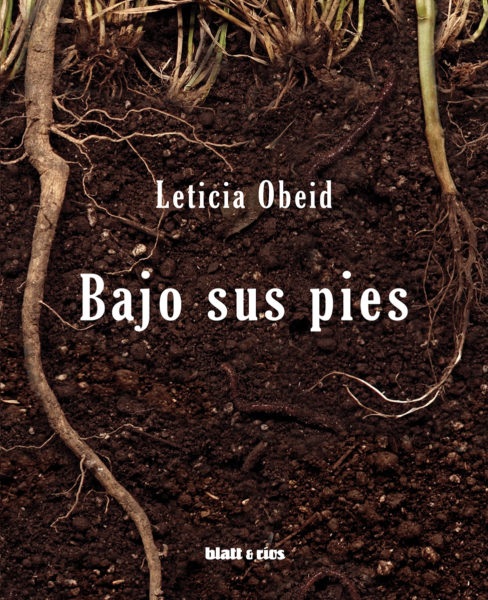
Preparação para o amor es un diario, una crónica de viaje, una novela de amour fou, un cuaderno de notas, todo a la vez. Editado como un objeto donde conviven dos relatos paralelos –un diario íntimo en las páginas impares y las notas al pie en las páginas pares- el texto recorre el tema del amor como un objeto de estudio que se le escapa a sus propios protagonistas, construyendo un soliloquio amoroso dirigido al amado ausente y un puñado de reflexiones sobre la experiencia del amor con sus problemáticas de género, sus barreras culturales, de clase, de pertenencia.
Obeid, Leticia
Preparação para o amor
Publicado originalmente en español como Preparación para el amor.
Traducción: Renato Tapado
Editorial: Par(ent)esis
Coordinación editorial: Gabi Bresola y Regina Melim
Proyecto gráfico: Pedro Franz
Impresso en Gráfica Cinelândia, Santa Catarina, Brasil, 2019.
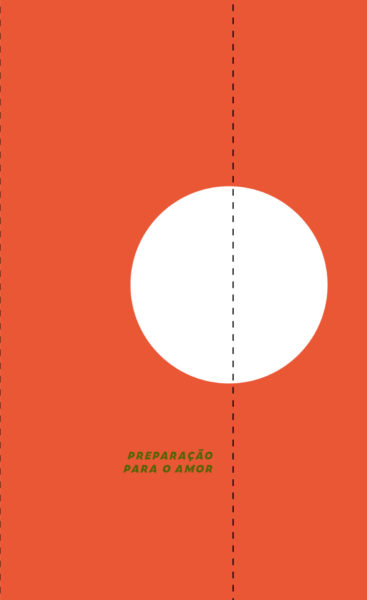
“Hay que decirlo sin rodeos y de una vez: este nuevo libro de Leticia Obeid puede leerse fluidamente, con sostenido disfrute y sin ninguna caída de interés, practicamente sin parar y de punta a punta. Pero, además, la escritura de Obeid inspira confianza, lo cual no es una valoración literaria – en cuyo caso se trataría de un juicio demasiado subjetivo, impresionista – ni el capricho voluntarista de un lector con fascinación fácil. Hay una honestidad vital que se respira en el texto, de la que emana una inmediata sensación de naturalidad, de sencillez doméstica; algo que no está, eventualmente, sólo en los contenidos ni en alguna conjetural espiritualidad de la autora, sino en la materia misma de una escritura que se hace creíble y palpable casi hasta lo táctil, como un precioso objeto físico iluminado, mas allá de la verdades o mentiras ficcionales, de confesiones, anécdotas verídicas o fantasías, que también las hay.”
Eduardo Stupia
Preparación para el amor.
Córdoba : Caballo Negro Editora, 2015.
288 p. ; 20×14 cm.
Colección narrativa
Diseño: Gonzalo Peralta / Guillermo Barbero
Foto de tapa: Leticia Obeid
ISBN 978-987-3612-11-4
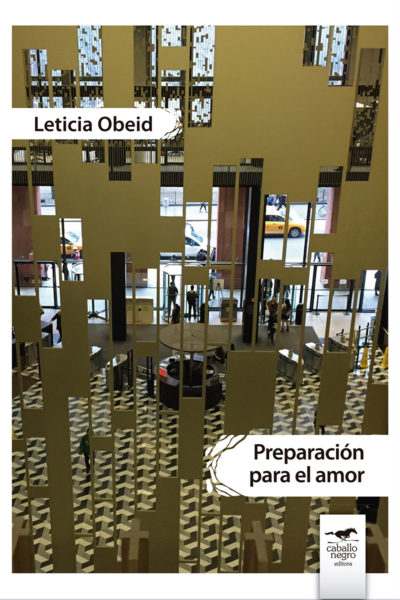
“Piensa entonces que si todo estuviera en su lugar, que si el centro fuera centro, ocupado por el centro, la carne principal, y por fuera las guirnaldas, frutitas y pequeños hilos, cada cosa en su sitio, entonces sería más fácil escribir. Dejara de haber tantas dudas como llanuras interpuestas entre el momento y el teclado, entre los dedos y una birome, entre su cuerpo horizontal y su cuerpo sentado, diligente, con los ojos bajos como haciendo una carpa protectora entre su cuerpo y el mundo, y entonces todo se volvería más unitario y ordenado. La plenitud desalojaría todos esos restos de cosas, de tiempo, de recuerdos y minucias, las pequeñas e infalibles fisuras que arrugan los bordes y poco a poco empiezan a abarcar el centro.”
Obeid, Leticia
Escribir, leer, escuchar. – 1a ed. – Buenos Aires : Blatt & Ríos, 2015.
120 p. ; 21×15 cm.
Texto principal: Federico Baeza
Entrevista por Alejandro Cesarco
Diseño: Nacho Jankowski
Traducción de: Liv Schulman.
ISBN 978-987-3616-51-8
1. Arte Contemporáneo Argentino. I. Schulman, Liv , trad. II. Título. CDD 708
Este proyecto contó con el apoyo del Ministerio de Cultura de la Nación.
“Siguiendo al Benjamin autobiográfico que recorre Sontag en Bajo el signo de Saturno, aquí el tiempo se convierte en espacio y Frente, perfil y llanura traza la cartografía de una sensibilidad. En este viaje hacia el interior geográfico y hacia el interior de Elena, el relato rompe toda continuidad cronológica, pero en estas disrupciones mantiene la simultaneidad. No es un trayecto lineal o la mera superposición de un personaje en un ambiente, ni la sucesión cronológica de recuerdos o la contemplación estática del pasado. Hay una preocupación en registrar con precisión las calles, los recorridos, las trampas, los mojones, la constitución sentimental inscripta en el paisaje.”
Alejandra Baldovin
Frente, perfil y llanura. – 1a ed. – Córdoba : caballo negro editora, 2013.
150 p. ; 20 x 14 cm. ISBN 978-987-29176-1-6
1. Narrativa Argentina. I. Título CDD A863
Fecha de catalogación: 13/06/2013
caballo negro editora
Colección narrativa
Diseño: Gonzalo Peralta / Guillermo Barbero
Arte de tapa: Belén Rivero Ríos
© 2013 caballo negro editora © 2013 Leticia Obeid
ISBN 978-987-29176-1-6
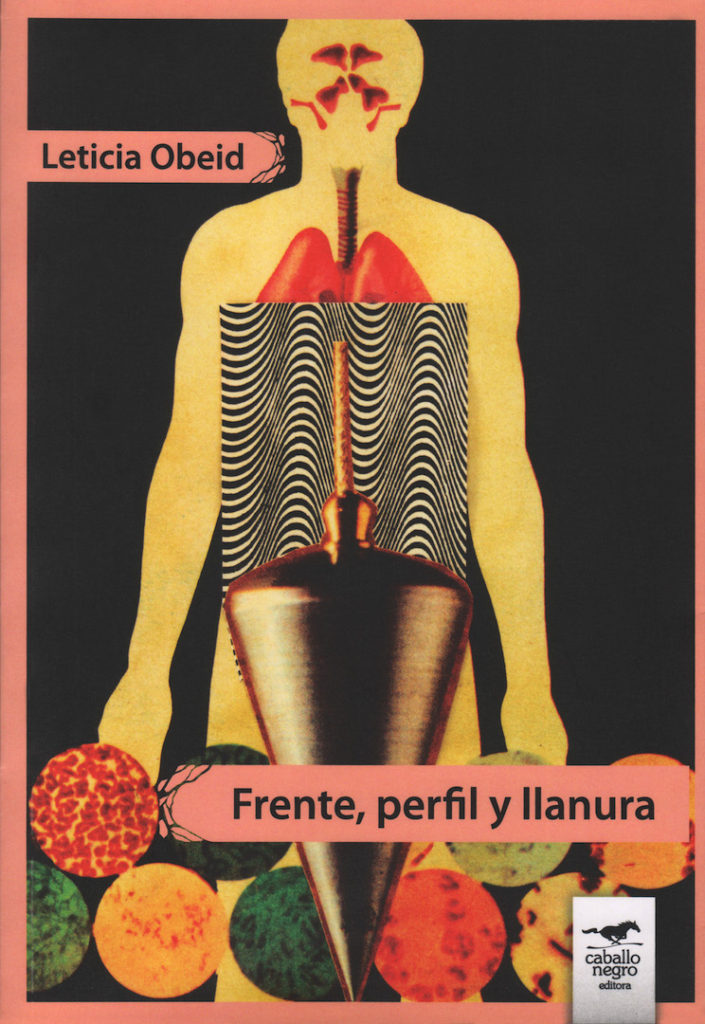
“Se conoce que sí es el primer libro de Leticia Obeid. Un cuento largo que narra las peripecias de Elena: después de una fiesta resacosa en Buenos Aires, se toma un colectivo a su pueblo natal. El plan es quedarse unos días, tal vez para reponerse anímicamente. Pero una madre, una perrita, parientes, amigos de la adolescencia y el pueblo, todo parece confabularse para que Elena no se vaya. Asolado por una sequía y con la amenaza de una tormenta que no termina de desatarse, el pueblo teje sus telarañas. Descripciones preciosas, escenas divertidas, prosa sensible a los ritmos del habla y a los sentidos en un viaje al centro del alma que, en el caso de los exiliados, se sabe, queda en el medio de la casa natal”.
Blatt & Rios, 2012
1a ed. – Buenos Aires : Blatt & Ríos, 2012.
Ebook ISBN 978-987-28565-0-2
1. Narrativa Argentina 2. Relatos I. Título
CDD A863
Diseño de cubierta: Leticia Obeid y Julia Masvernat
Imagen de cubierta: Leticia Obeid
© 2012 Leticia Obeid
© 2012 de esta edición Blatt & Ríos

Antología de crónicas de viaje.
“¿Qué hacemos cuando viajamos? Siempre verificamos algo”, dice Proust. ¿Existe la voz que escucho en la crónica? NO lo sé, pero es la voz que comprueba que estuvo allí el cuerpo extraviado en el espacio-tiempo del viaje. En la vuelta hay signos que resuenan. Escribir y leer en el bosque del pensamiento del mundo. Los visitantes, cronistas inconscientes, se sumergen sensorial y perceptivamente, habitan el misterio de las cosas, sin temor entran y salen en círculos.”
Belén Rivero Ríos
Alejandra Baldovin, Sonia Budassi, Washington Cucurto, Cuqui, Leticia El Halli Obeid, Elvio Gandolfo, Candelaria Jaimez, Pedro Lemebel, Marcos López, Santiago Olagaray, Sol Pereyra, Damián Ríos, Hernán Tejerina, Hebe Uhart.
Caballo Negro Editora, Córdoba, 2011.
ISBN: 978-987-24936-6-0
220 págs.
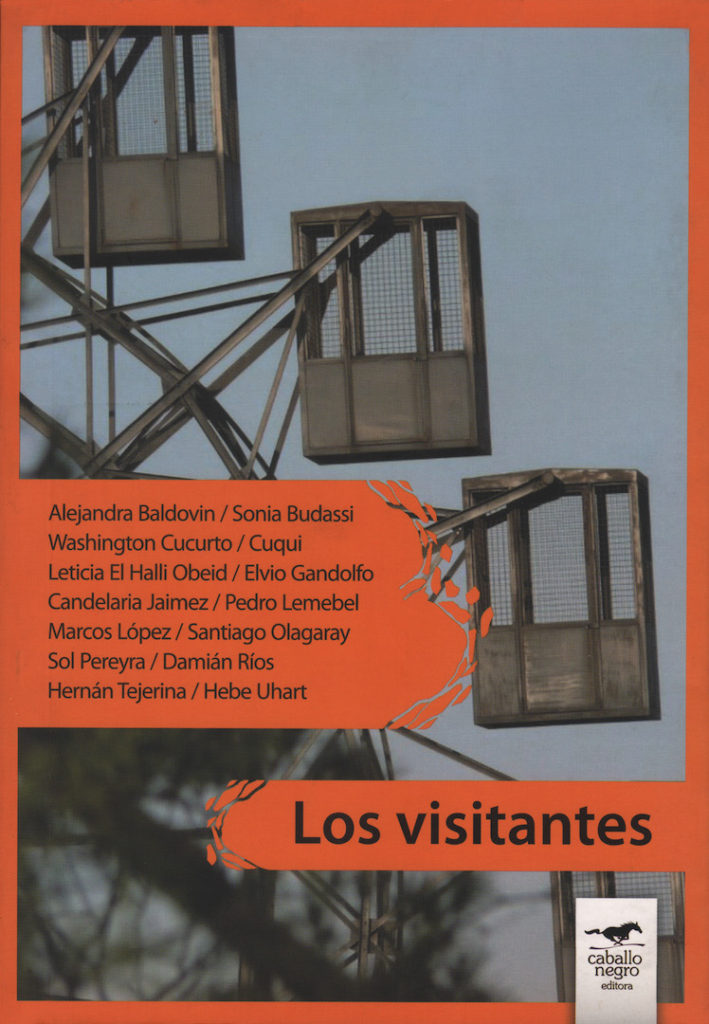
Centro Cultural Ricardo Rojas.
Leticia El Halli Obeid (1er premio); Juan Maisonnave (2do premio); Laura Gruppo (·er premio); Tomás V. Richards; Facundo Gerez; Fernando Krapp; Alfredo Staffolani; Natan Ariel Rajchenberg; Cecilia Boullosa; Marina Jurberg.
Jurado: Laura Isola, Federico Jeanmaire, Mariana Enríquez
Libros del Rojas, 2010.
108 p.; 23 x 15 cm. (Narrativa)
ISBN 978-987-1075-89-8
Universidad de Buenos Aires, Secretaría de Extensión Universitaria y Estudiantil
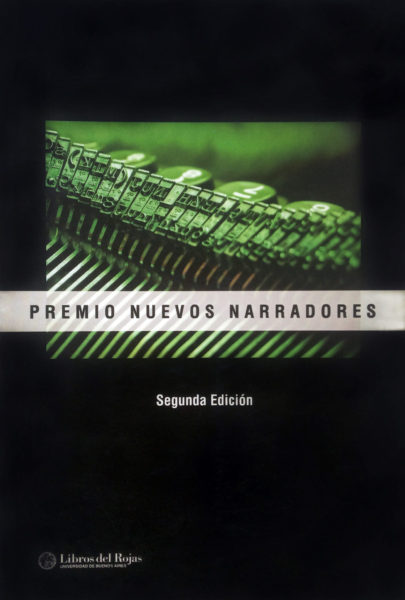
Este video retoma materiales filmados en las salas de trabajo del Museo Nacional de Ciencia Bernardino Rivadavia. En él vemos las manos de los científicos y encargados de preparar las piezas fósiles halladas por paleontólogos argentinos para su posterior clasificación y muestra. Fue exhibido en la muestra individual Piedra, tijera, papel, Galería Hache, Buenos Aires, 2018.
Tiempo antes de publicar su libro Animales (Ed. Adriana Hidalgo, Buenos Aires, 2017) Hebe Uhart quiso visitar el parque de animales Temaikén, en la provincia de Buenos Aires. En este paseo, la escritora toca alguna de las ideas y temas que desarrolla en el libro, observa y comparte sus impresiones con la misma gracia de sus textos.
Con Hebe Uhart y Andrea López.
Filmado en diciembre de 2016.
Duración 16’ 52”, 2017.
Cámara y edición: Leticia Obeid.
Posproducción de sonido: Luis El Halli Obeid
Video realizado para acompañar a L`officina della resurrezione, una obra musical compuesta por Fabián Panisello en 2013 en colaboración con Erri de Lucca. La pieza y el video fueron ejecutados en vivo en el auditorio principal del Museo Nacional de Arte Contemporáneo Reina Sofía, Madrid, el 23 de febrero de 2017. Para el texto de esta ópera contemporánea, Erri de Lucca revisita el Libro de Ezequiel, en el Antiguo Testamento, como punto de partida. El video fue filmado en el Museo Nacional de Ciencias Naturales Bernardino Rivadavia, en Buenos Aires, en sus salas públicas, en las colecciones de fósiles y en el área de trabajo donde las piezas halladas se preparan para su conservación y su réplica.
Composición: Fabián Panisello
Textos: Erri de Luca y Libro de Ezequiel
Intérpretes: Holger Falk (Barítono) y PluralEnsemble
Dirección: Fabián Panisello
Video: Leticia Obeid
Cámara: Juan Renau
Edición: Laura Preger
Duración: 23:52 minutos
Realizado con el apoyo del Ministerio de Cultura de la Nación Argentina en el marco de Argentina Plataforma Arco.
Curaduría: Sonia Becce
Fragmentos de la película Alien Resurrection (1997), del director Jean-Pierre Jeunet en los que la imagen se muestra como base de un vaivén en la pista de sonido entre la versión original y su doblaje al español.
El video toma algunas escenas de la película The Philadelphia Story, de George Cukor, 1940, y superpone la versión original con la versión doblada al español, logrando un efecto de duplicación de la imagen y del sonido. Así, al guión original basado en una serie de dudas y desencuentros amorosos, en un estilo de diálogo rápido y chispeante, se le suma una capa extra de información, que permite iluminar ciertos momentos del encuentro: la traducción entre los idiomas se vuelve una metáfora de la (in)comunicación amorosa.
Fragmentos de series y películas norteamericanas icónicas, dobladas al español mexicano van conformando un pequeño ensayo visual sobre el tema de la traducción.
Jano era, en la mitología romana, un dios bifronte: una cara miraba al pasado y la otra, al futuro. Jano era el dios de las puertas, los comienzos y los finales. En esta serie, la hoja del libro se comporta como Jano, en ese momento breve en que se pasa una página, yendo del pasado al futuro de un texto o a la inversa. Jano es también el intento de revisar la mínima porción de tiempo que se puede congelar en una imagen para jugar a revertir un hecho, una acción, un momento.
El video muestra una clase de doblaje impartida por Humberto Vélez, el creador de la voz latina de Homero Simpson, en un estudio de grabación. Filmado en la Ciudad de México en 2011.
El video documenta una serie de situaciones relacionadas con la producción de una obra de teatro que se realizó en Alemania con un bailarín alemán, una cantante argentina y tres músicos argentinos de una comunidad Wichi. A partir de este evento único, que tuvo lugar entre Berlín y Santa Victoria Este, en la provincia de Salta (Argentina), como punto de partida, el video desarrolla una serie de reflexiones y observaciones sobre las experiencias y formas en que las diferentes formas de comunicación y la traducción cultural se ponen en juego, junto con sus obstáculos, puentes, atajos y desafíos
Duración 25’
Texto sobre Bilingüe aparecido en la revista Blanco sobre Blanco, octubre 2012: una crónica de la experiencia.
Dobles compila fragmentos de una serie de entrevistas a actores de doblaje mexicanos, voces emblemáticas de la televisión y el cine que se vio en Latinoamérica desde la década del 60 en adelante. Estas figuras cuentan anécdotas sobre su oficio mientras van desgranando reflexiones sobre la función de su tarea, la traducción, la supuesta neutralidad de la lengua, la relación entre la imagen y el sonido y otros temas.
Duración 10’
Edición de 5 + P.A.
Una copia de Dobles fue adquirida por el MUAC, Universidad Autonoma de México.
Una mano hojea la edición argentina de Jane Eyre, la novela de Charlotte Brontë, editada en la colección infantil “Robin Hood”, muy popular para varias generaciones de argentinos. Luego repite los gestos con un libro impreso en árabe, como un contrapunto entre dos idiomas, lenguajes, formas de escritura y de lectura. Las ilustraciones muestran además dos tipos de estética de la representación femenina bastante divergentes, intervenidas por un gesto que recrea la figura del velo, intentando indagar si los estereotipos están en la imagen o en lo que interpretamos de ella.
Duración 4’ 20”
Filmado en un viaje en tren desde la estación de Retiro, en el centro de Buenos Aires, hasta la de Zárate, en el conurbano bonaerense, el video documenta la acción de copiar manualmente la Carta de Jamaica de Simón Bolívar, un documento que data de 1815 y desarrolla la filosofía del político venezolano en la forma de un diagnóstico y pronóstico para Latinoamérica. El viaje muestra los diferentes paisajes urbanos, sociales y económicos de la ciudad de Buenos Aires y su periferia, para repensar las ideas de este texto y compararlas con el presente. Como eco del problema de la traducción entre esas ideas y la práctica, la lentitud de la escritura contrasta con la velocidad del viaje, haciendo de la copia manual del texto una forma de transitarlo en la acción, de apropiarse de las palabras mientras el entorno va cambiando.
La obra fue realizada por comisión del Goethe Institut para la exhibición itinerante Menos tiempo que lugar en conmemoración de los 200 años de independencia en Latinoamérica.
Duración 25’ 30”
Soporte original: Minidv
Cámara: Julian D´Angiolillo, Julia Masvernat, Jorgelina Sanchez.
Toma y posproducción de sonido: Hernán Kerlleñevich
Edición: Leticia Obeid
Diario de viaje, autorretrato, y ensayo audiovisual a la vez, este video fue filmado en París durante 2007 usando como punto de partida El libro de los pasajes de Walter Benjamin. El video desarrolla lo que Benjamin denominó “constelaciones” de datos, hechos y pensamientos, que se van conectando entre sí, atravesando tiempo y distancia, en un concepto de la historia visual y de la escritura como montaje de fragmentos.
De esta manera, el relato se conforma como registro de una experiencia de conocimiento en el que la acción, el pensamiento y la mirada se entrecruzan todo el tiempo para confrontar literatura y realidad, recuerdo y presente; la ciudad hoy, con sus problemáticas posmodernas y sus reactualizaciones del sueño moderno que la ciudad de París representa.
Cuadernillo sobre B. editado en ocasión de su exhibición en la muestra Investigación/Infraestructura, CCEBA, 2009.
Duración: 58 minutos
Idea, cámara y edición: Leticia El Halli Obeid
Sonido: Pablo Chimenti/Hernán Kerlleñevich.
Soporte original: Video monocanal (minidv pal)
Filmado en París, junio-octubre de 2007.
Realizado en el marco del programa de residencias artísticas cruzadas entre Buenos Aires y París, con el apoyo de la Ville de Paris, la Secretaría de Cultura de la Ciudad Autónoma de Buenos Aires y la Embajada de Francia en Argentina,
La pluma retrata en papel lo que ve por la pantalla de la cámara de filmar, en una especie de puesta en abismo artesanal.
Imágenes filmadas en una fábrica de cosechadoras en la provincia de Córdoba, Argentina, se intercalan con escenas rurales de un libro para niños ilustrado con pinturas de Brueghel.
Una pluma va y viene sobre una superficie de papel, rayando y haciendo sonidos que se acercan y alejan alternativamente de la cámara.
Este video fue originalmente producido en el marco de un proyecto seleccionado para el Premio Petrobrás y exhibido como videoinstalación en la feria de arte ArteBa, Buenos Aires 2006. Iba acompañado de una publicación. El trabajo mezcla material filmado durante una cosecha de soja en la llanura pampeana, con material de archivo de una fábrica de cosechadoras que existió en una pequeña localidad de la provincia de Córdoba desde fines de la década del ‘40. Algunas imágenes de una cosecha de maíz, filmada en los 80, se mezclan con filmaciones de la fábrica y las dificultades de una máquina de deja de funcionar.
Duración: 8’45’’
Soporte original: miniDV pal
Material de archivo: super 8 transferido a vhs
Idea y Cámara: Leticia El Halli Obeid
Edición: Jorgelina Sánchez y Leticia El Halli Obeid
El video colecta fragmentos de la filmación de una serie de personas invitadas a describir una obra de arte que recuerden. En estos relatos, la descripción de las diferentes obras deviene un relato emocional de lo que se intenta recordar, así como una reflexión cercana y doméstica del lugar de la experiencia estética en la vida cotidiana. Este trabajo fue realizado con una beca de perfeccionamiento de la Fundación Antorchas, 2003-2004 y ha sido exhibida en versiones de diferentes largos. El museo Castagnino-Macro tiene una versión de 8’45’’ llamada Relatos (Lipsync).
Duración 6’ 56”
Una voz en off describe una obra de Vermeer, donde una mujer hace tareas domésticas mientras vemos en la imagen a una persona que alimenta una colmena.
Duración 1’ 15”
En este video la palabra se usa en carteles tipográficos con frases, preguntas, conclusiones provisorias derivadas de la realización del proyecto “Relatos”.
Duración 2’ 20”
Video realizado a partir de un pedido de la artista Mirtha Dermisache, documentando una inauguración de su muestra homónima en el Centro de España en Buenos Aires, en 2005. Edición revisada por la artista.
Cámara y edición: Leticia Obeid
Duración: Duración 5’ 52” | Hi8, color, sonido.

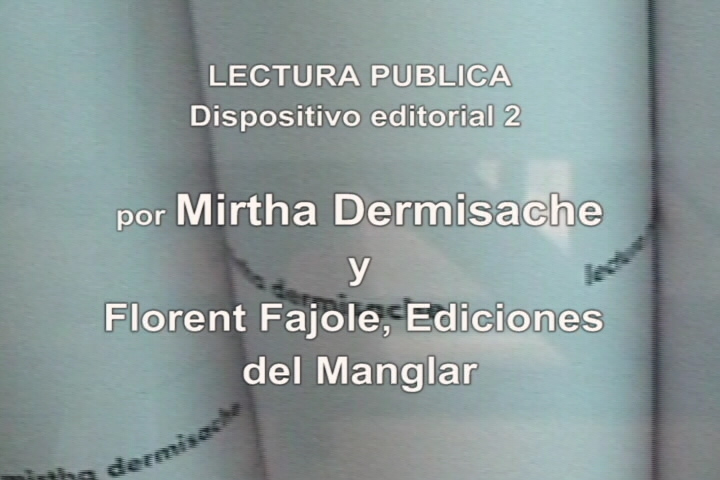
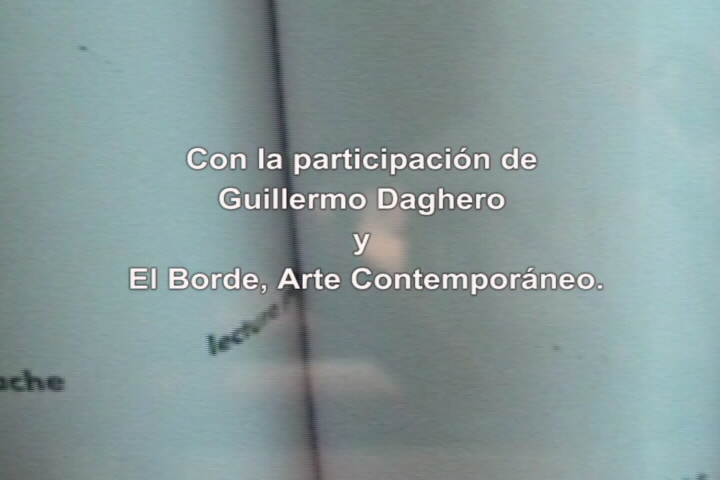
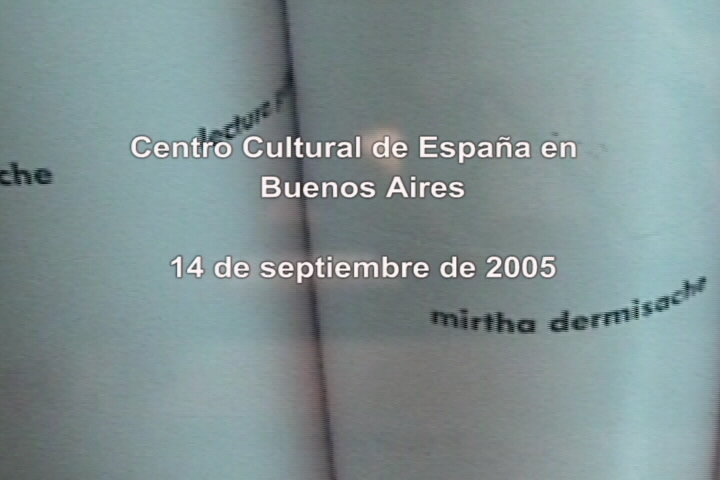
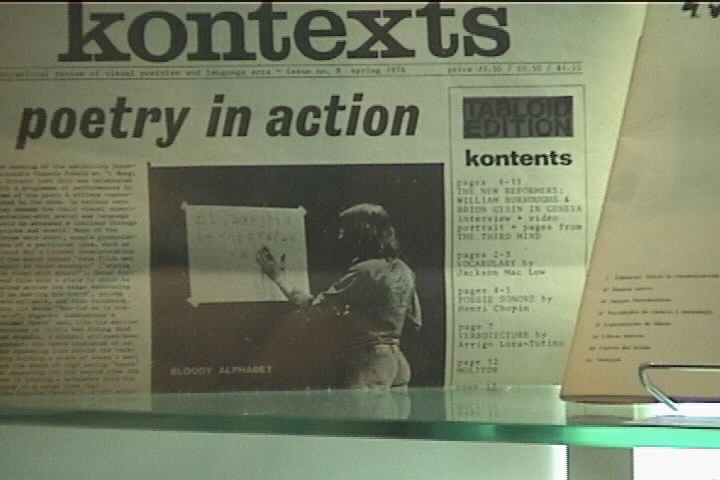
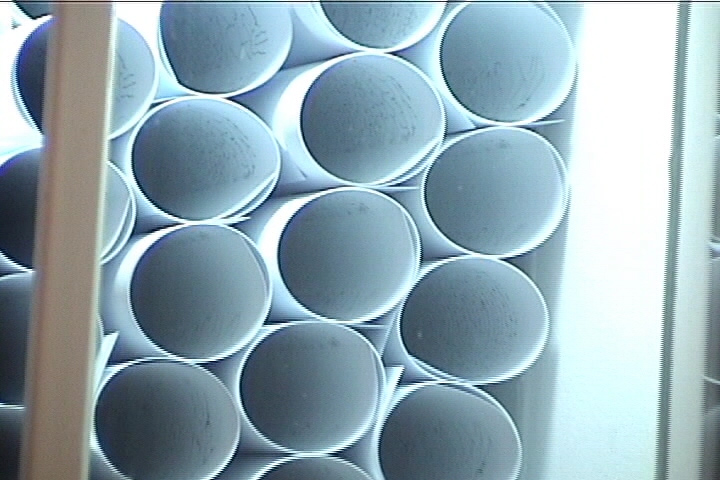
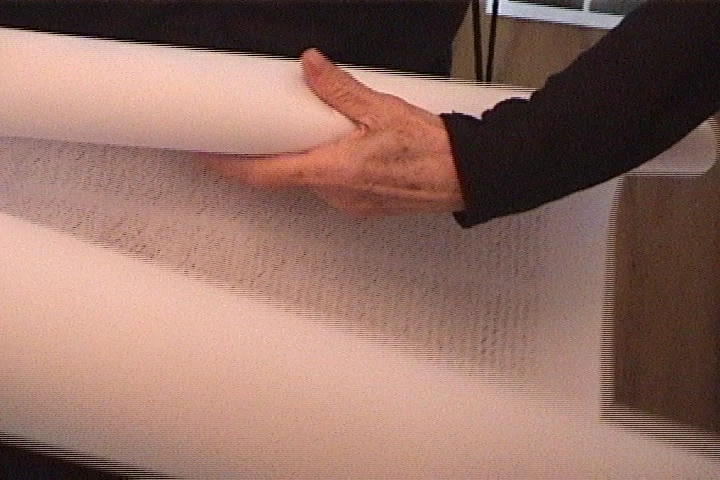
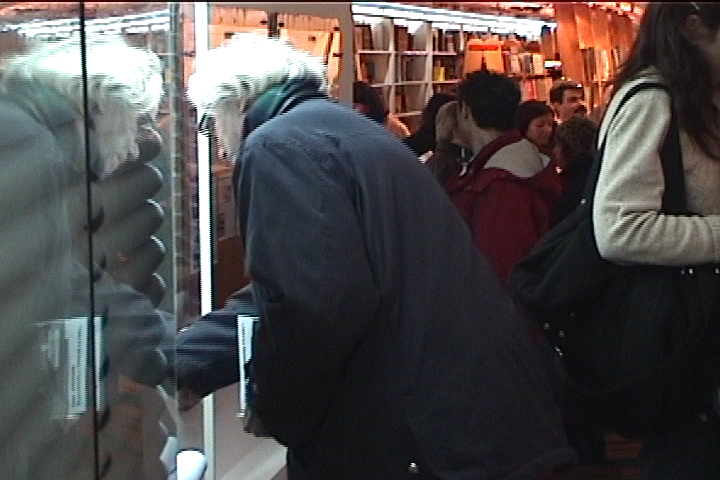
El video muestra tres escenas consecutivas: una mano escribe una palabra en español que va deformándose hacia la fonética del inglés; la búsqueda y lectura de la palabra “autismo” en el diccionario; el acto de escribir y dibujar la palabra “Arrepio” (“piel de gallina”, en portugués) sobre un papel, mientras una voz canturrea la misma palabra.
Una mano escribe la palabra “vení” una y otra vez sobre la misma porción de papel hasta que éste empieza a romperse.
Duración 4’
La autora del video canta una canción de The Beatles (“I ́m looking through you”/ Mirando a través tuyo, del album Rubber soul, 1965) haciendo playback, mientras aparece a su vez la traducción al español subtitulando la imagen.
El video recopila momentos de la filmación de una serie de personas cantando su canción favorita por medio de auriculares. El resultado es una nueva “canción” hecha de los fragmentos.
Filmado y editado en Atlantic Center for the Arts, entre septiembre y octubre de 2001.
Duración 4’ 50”